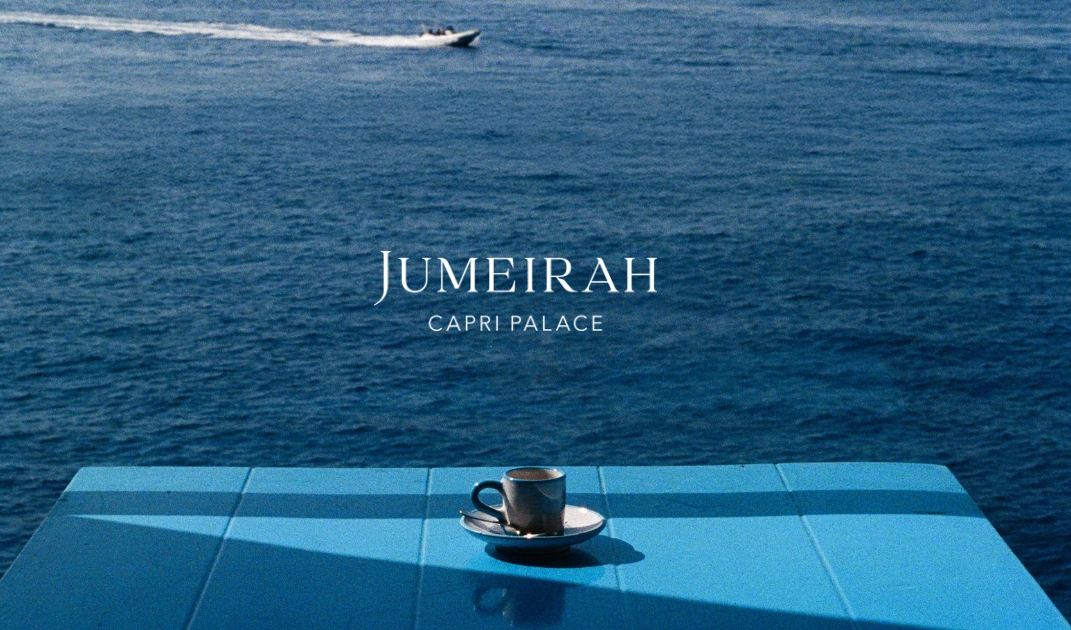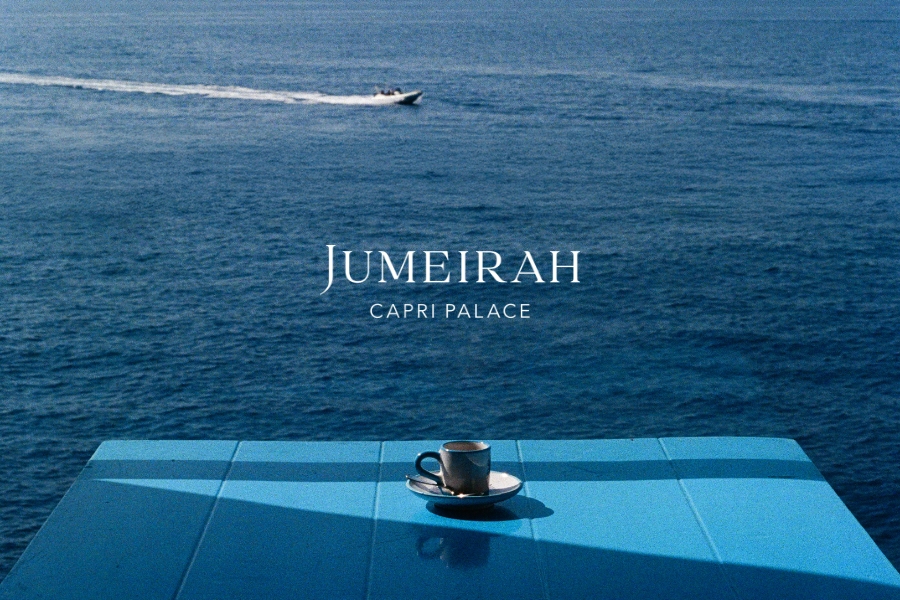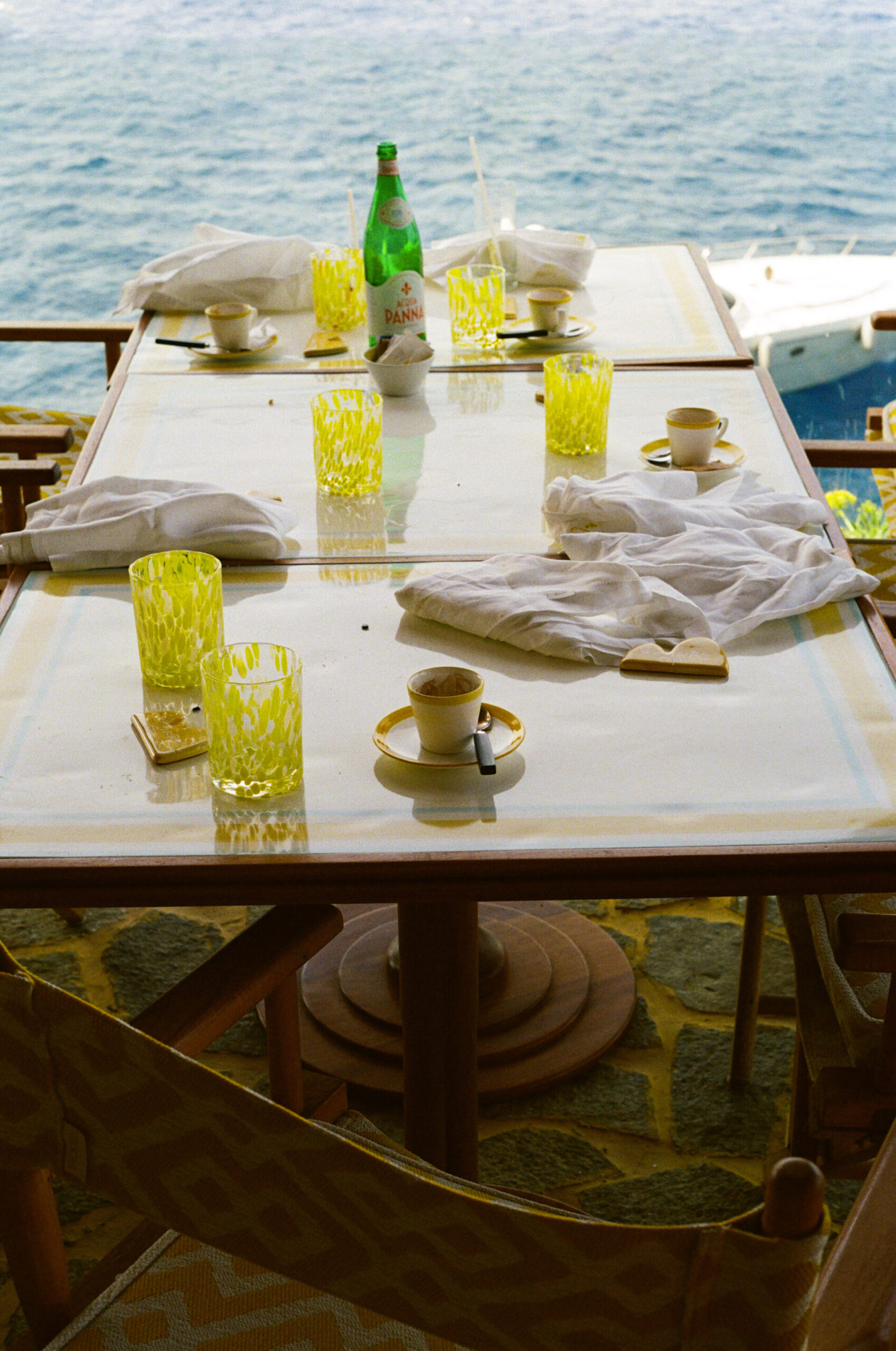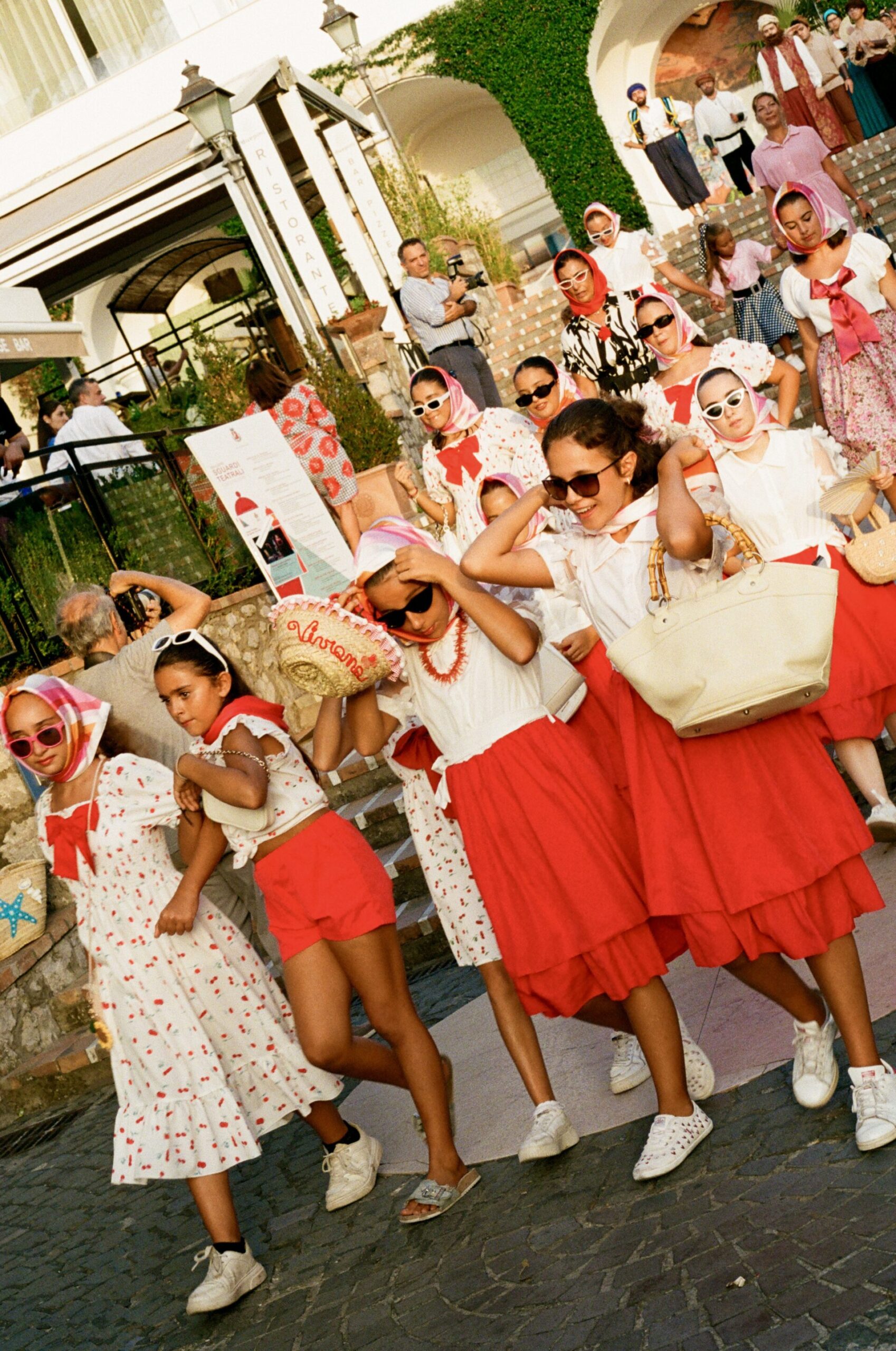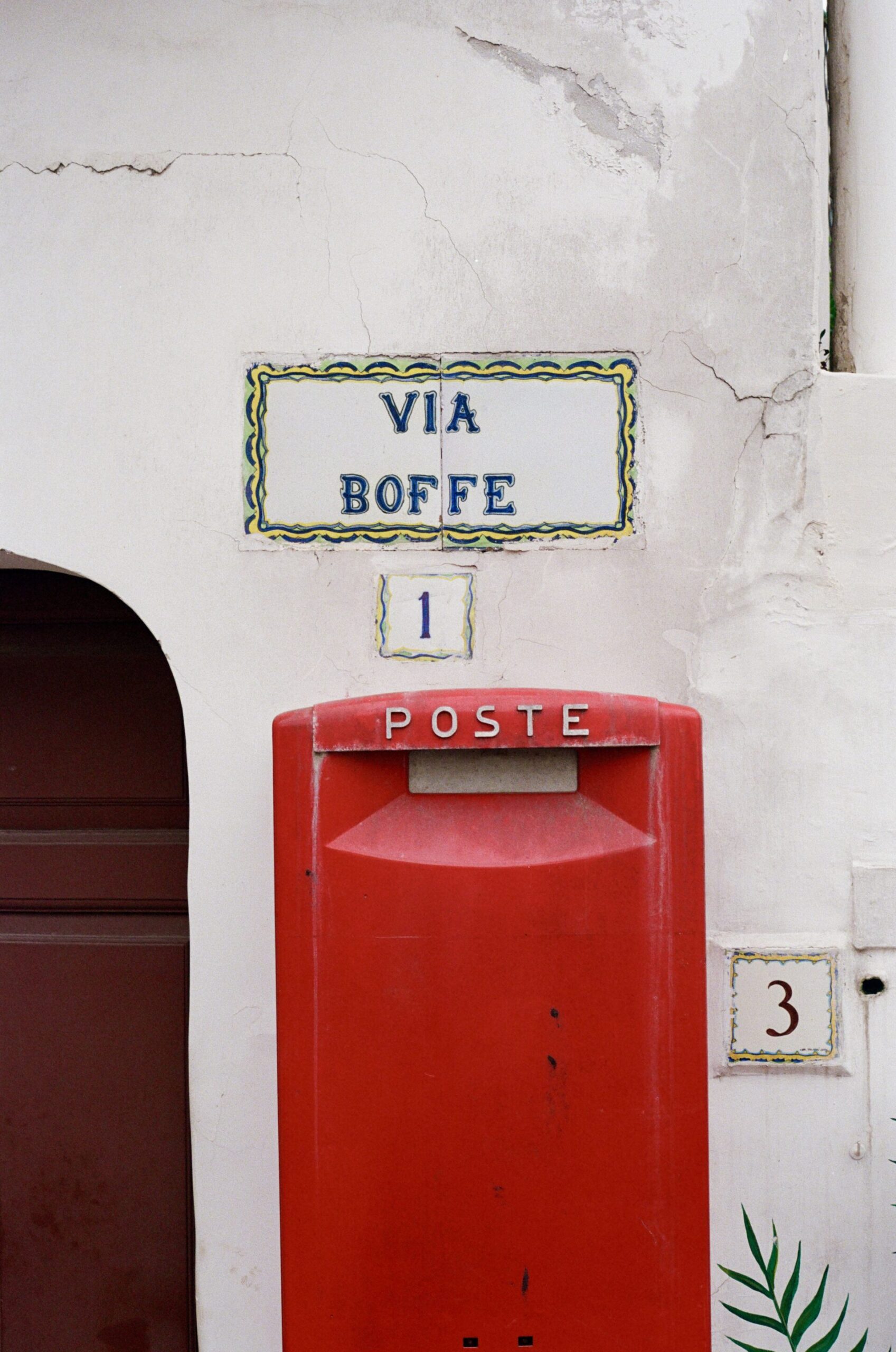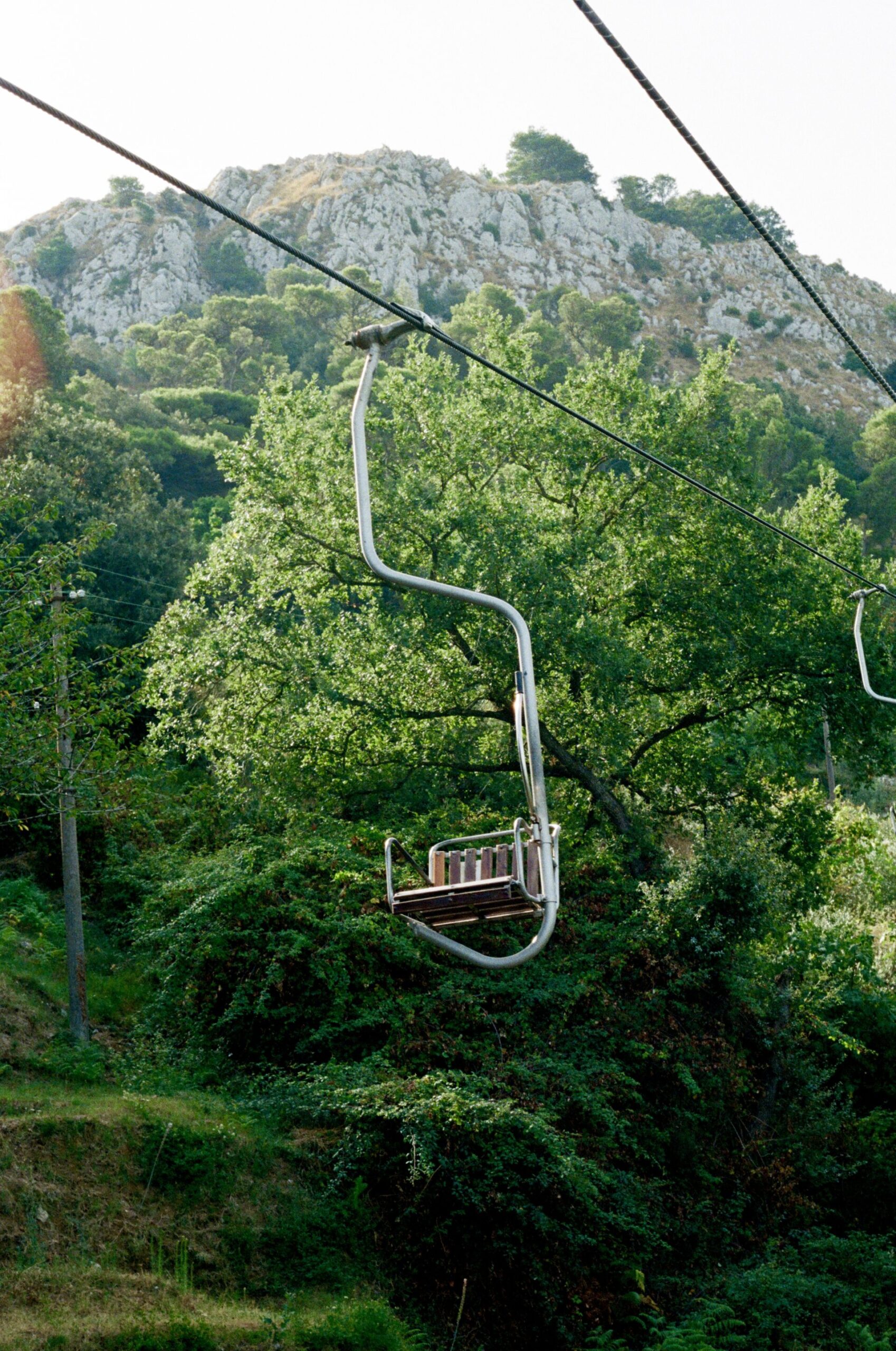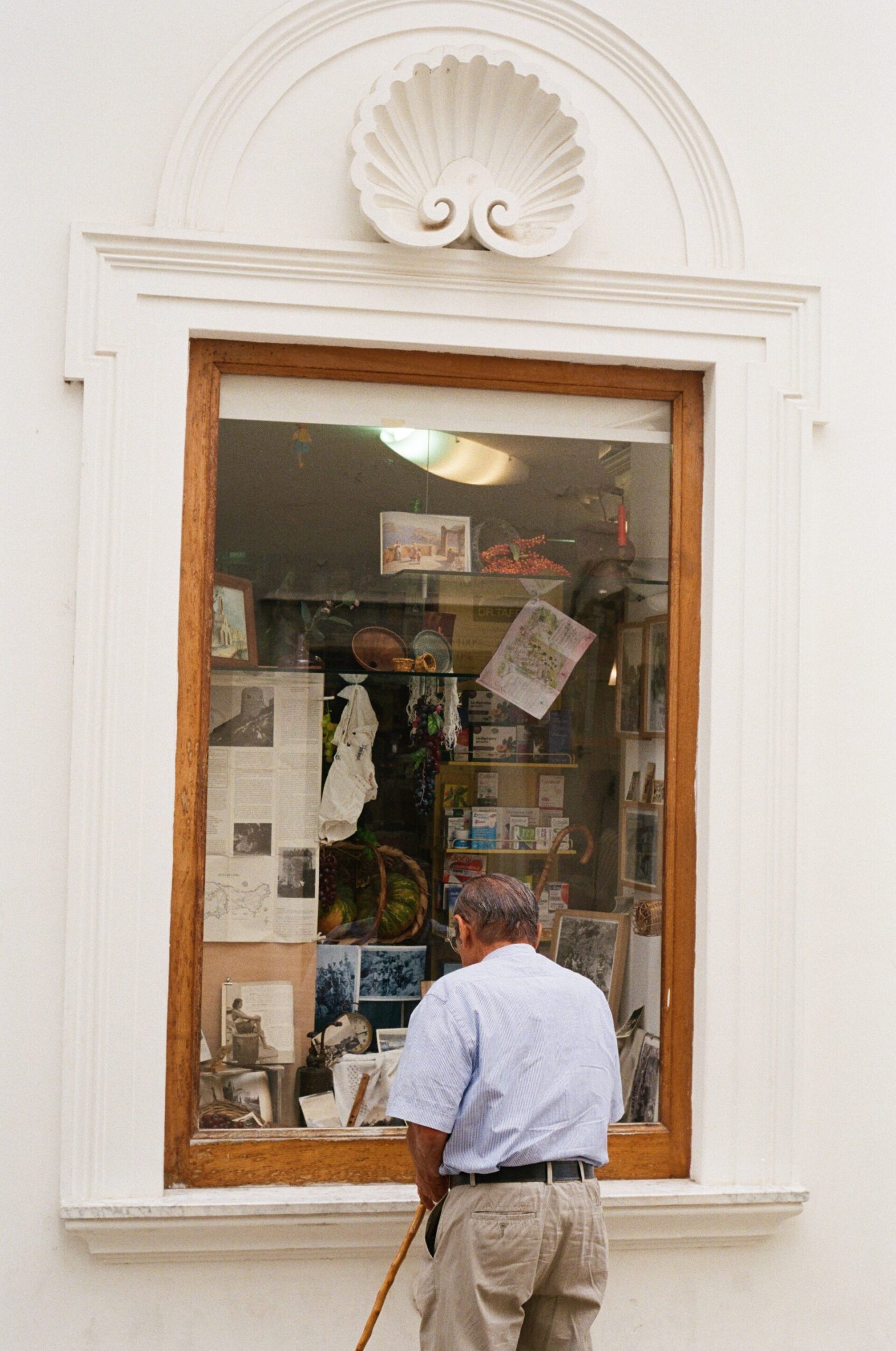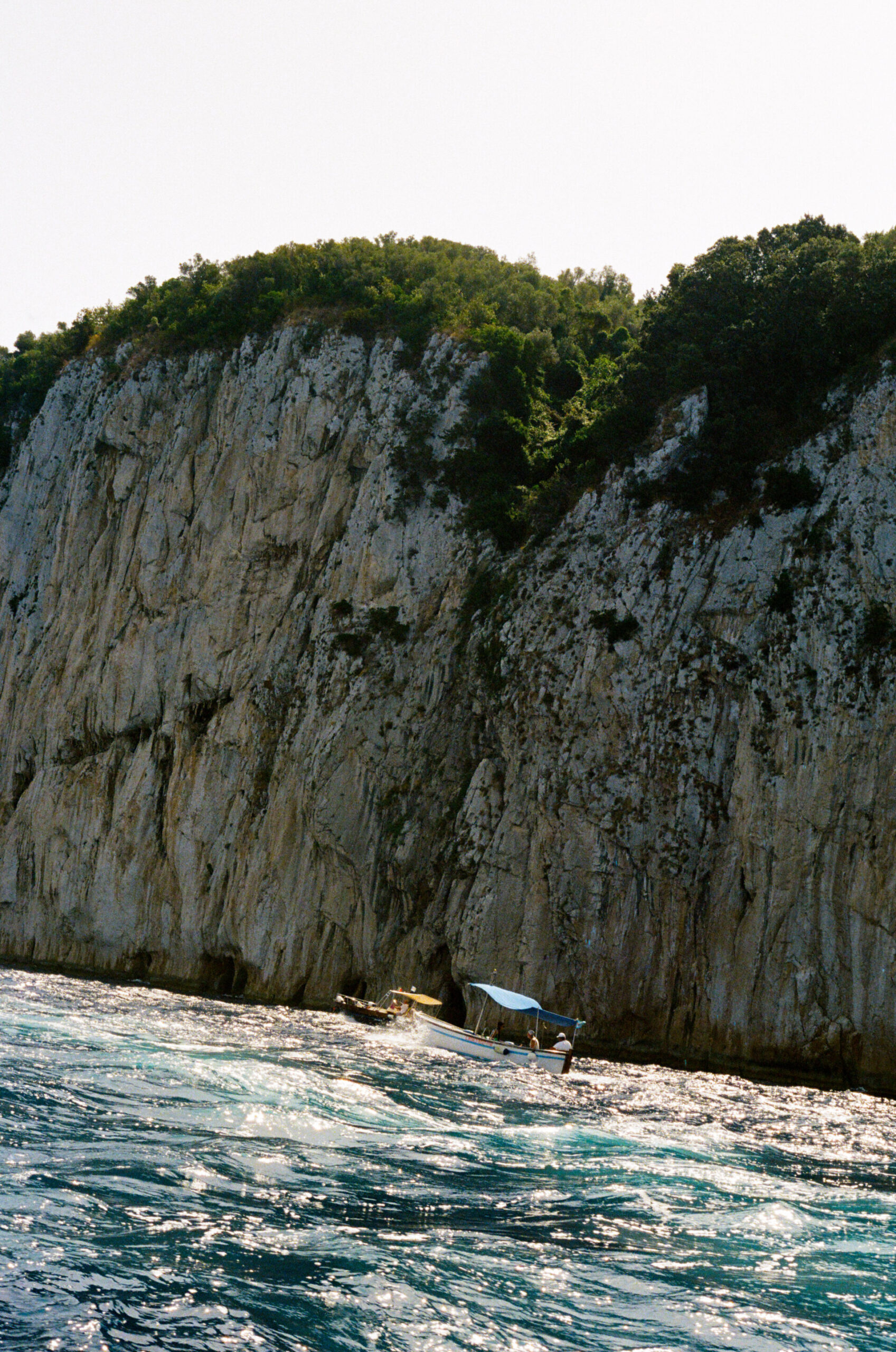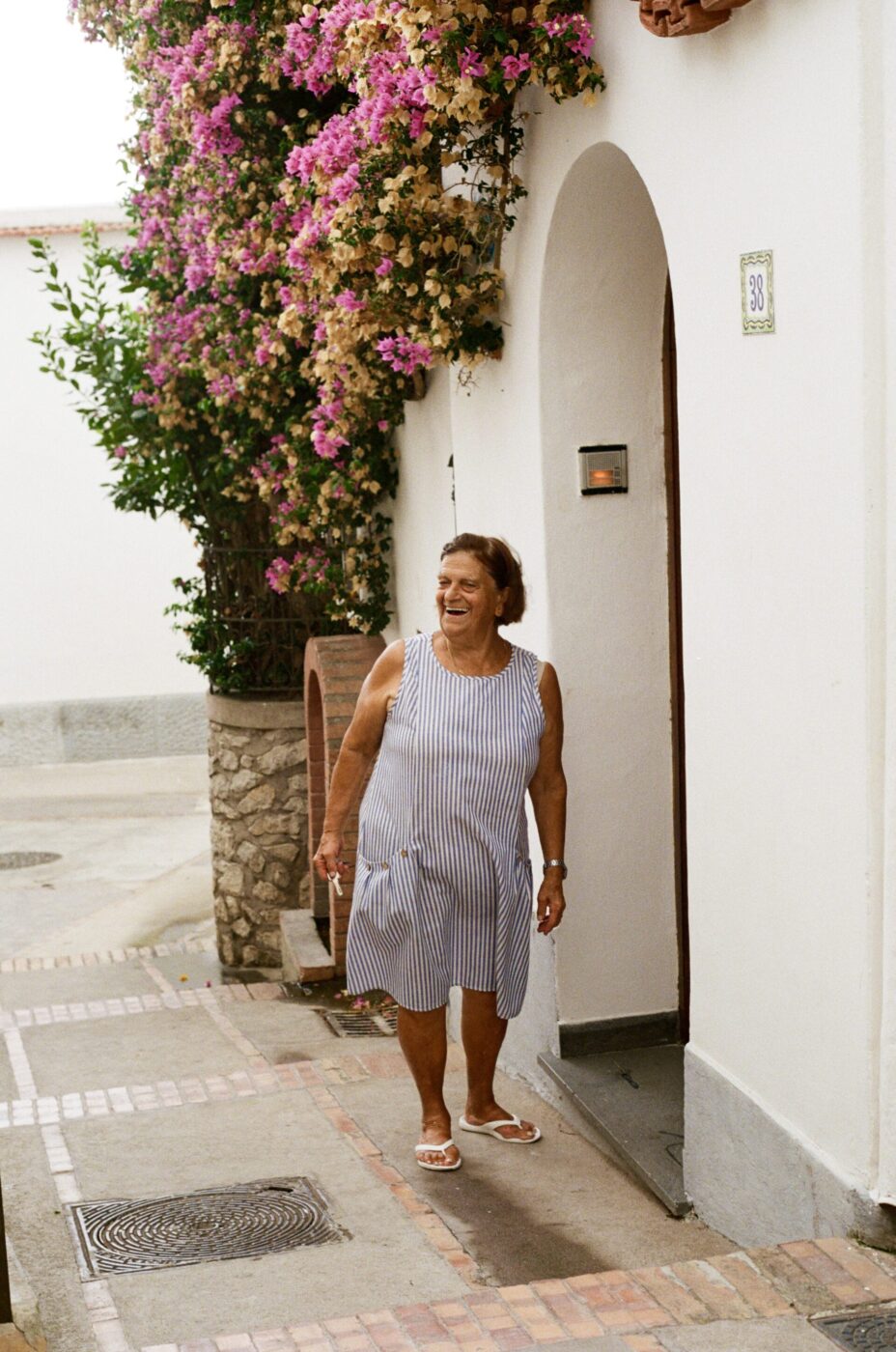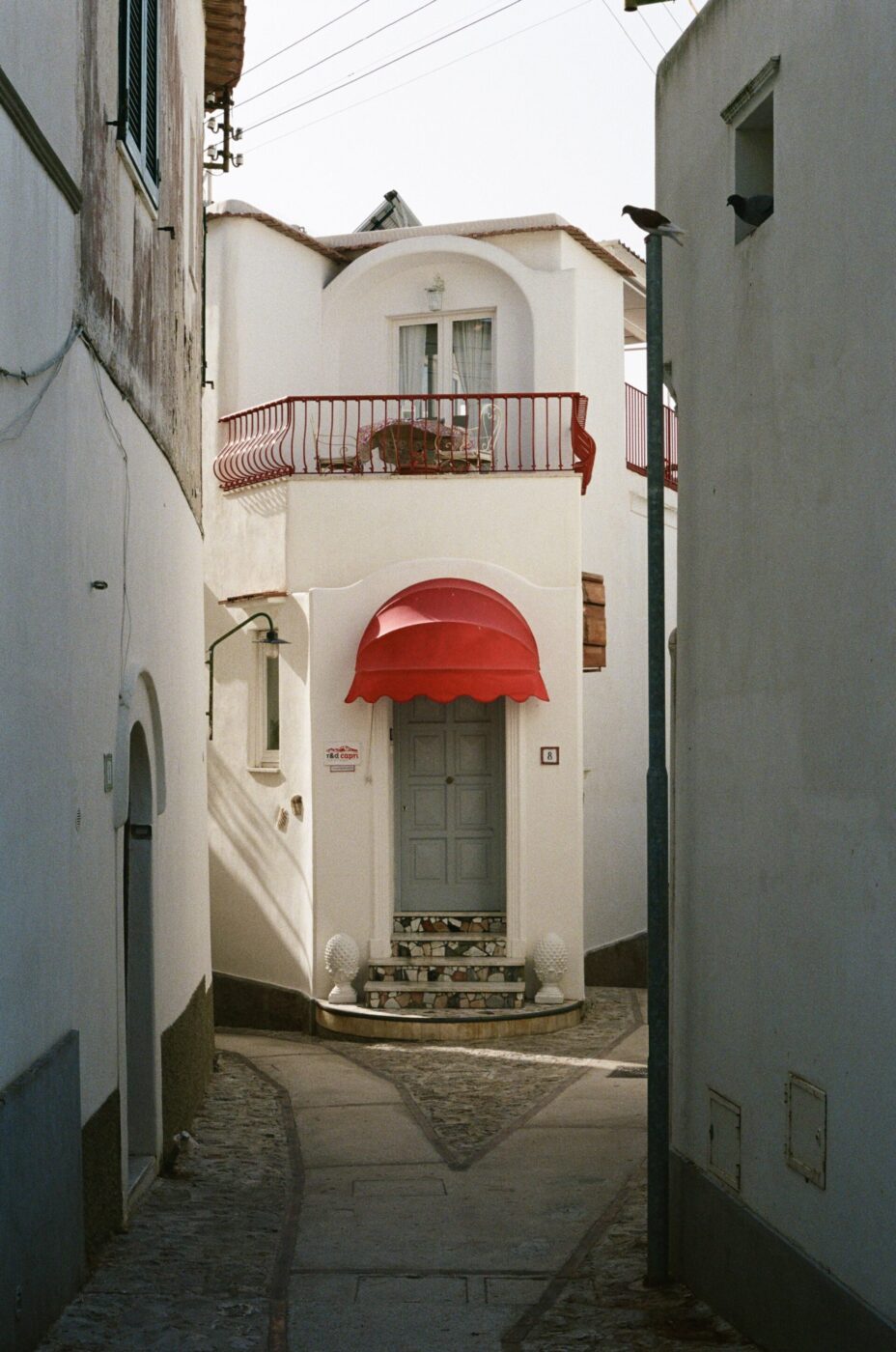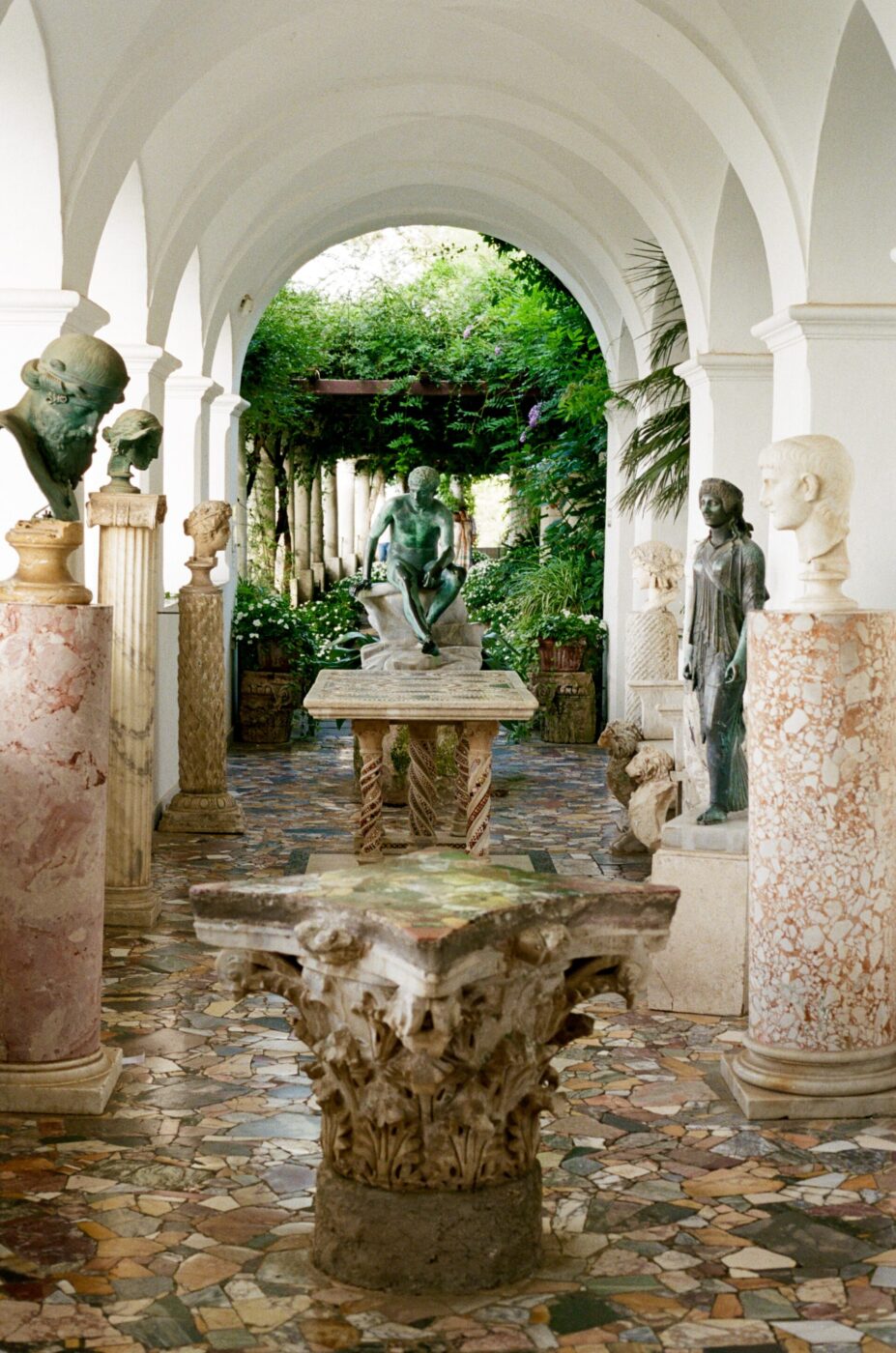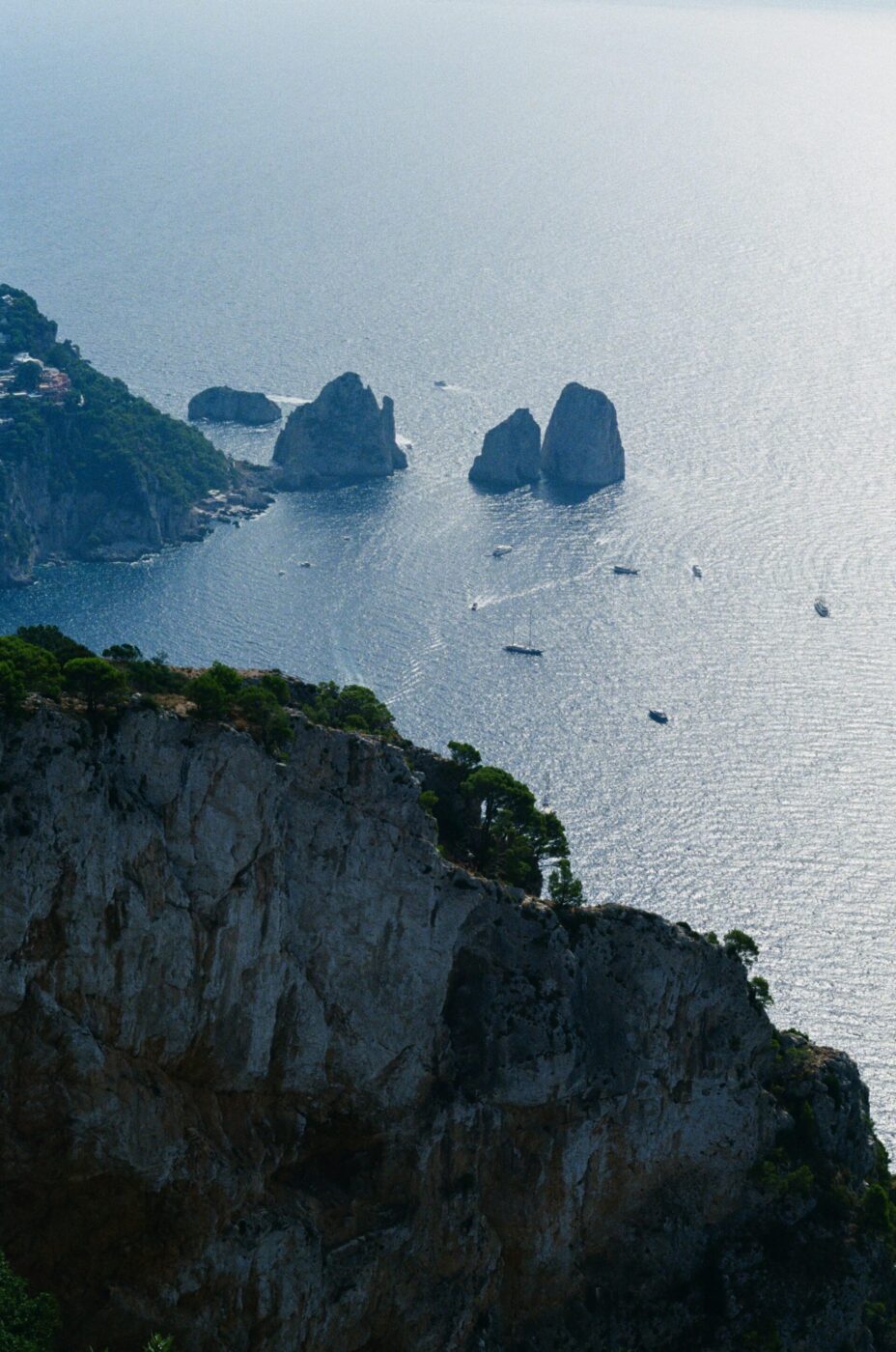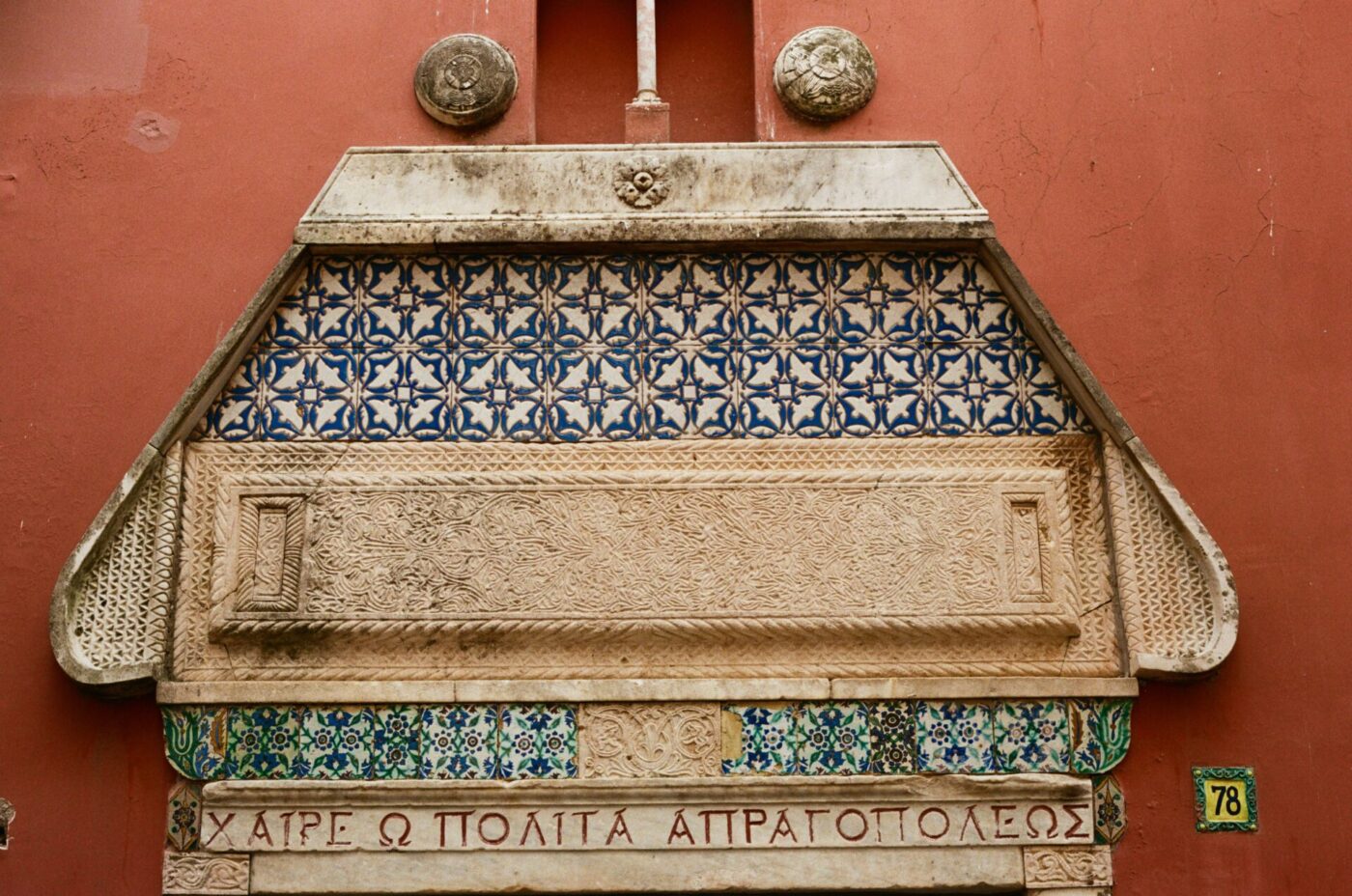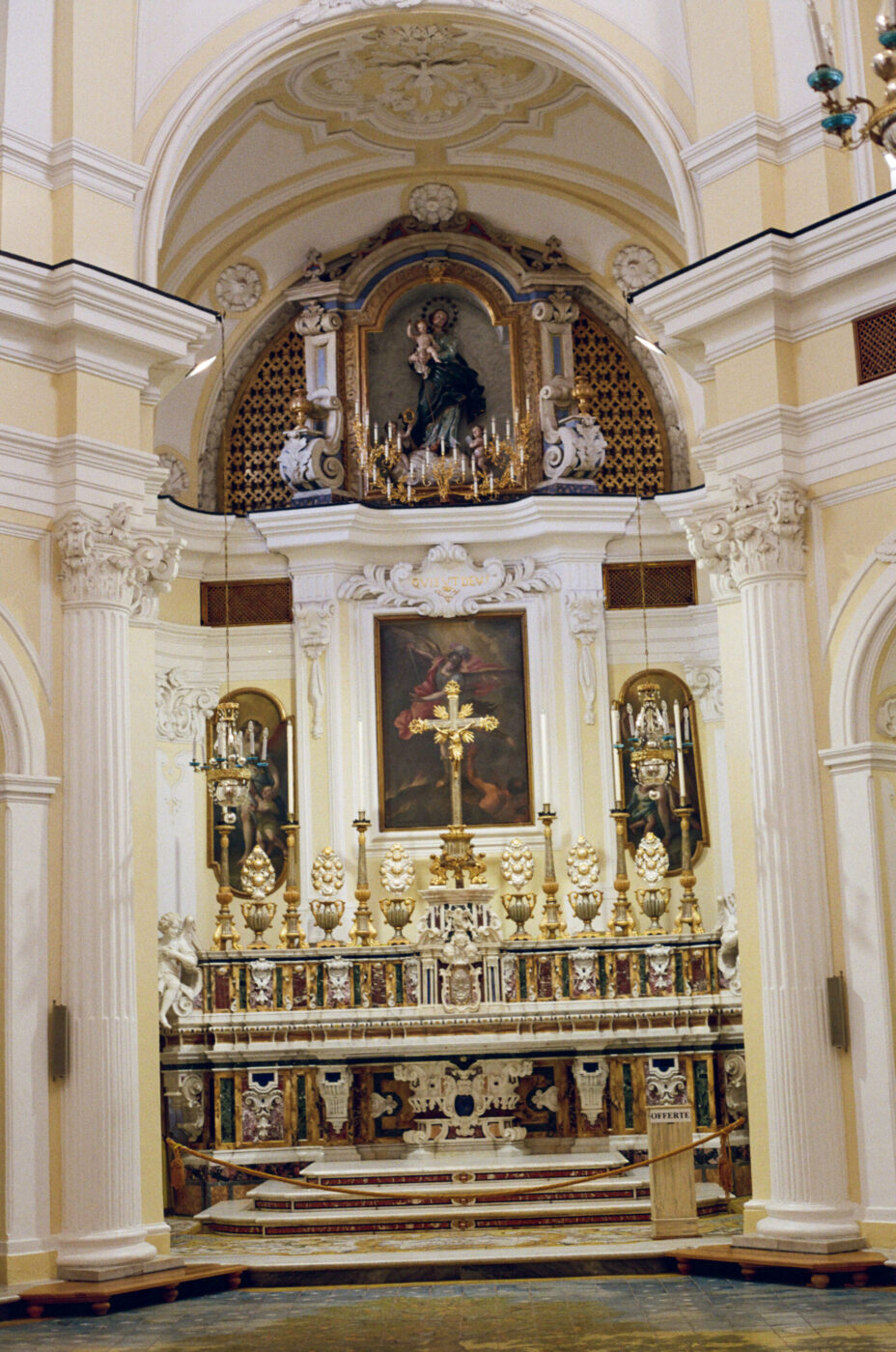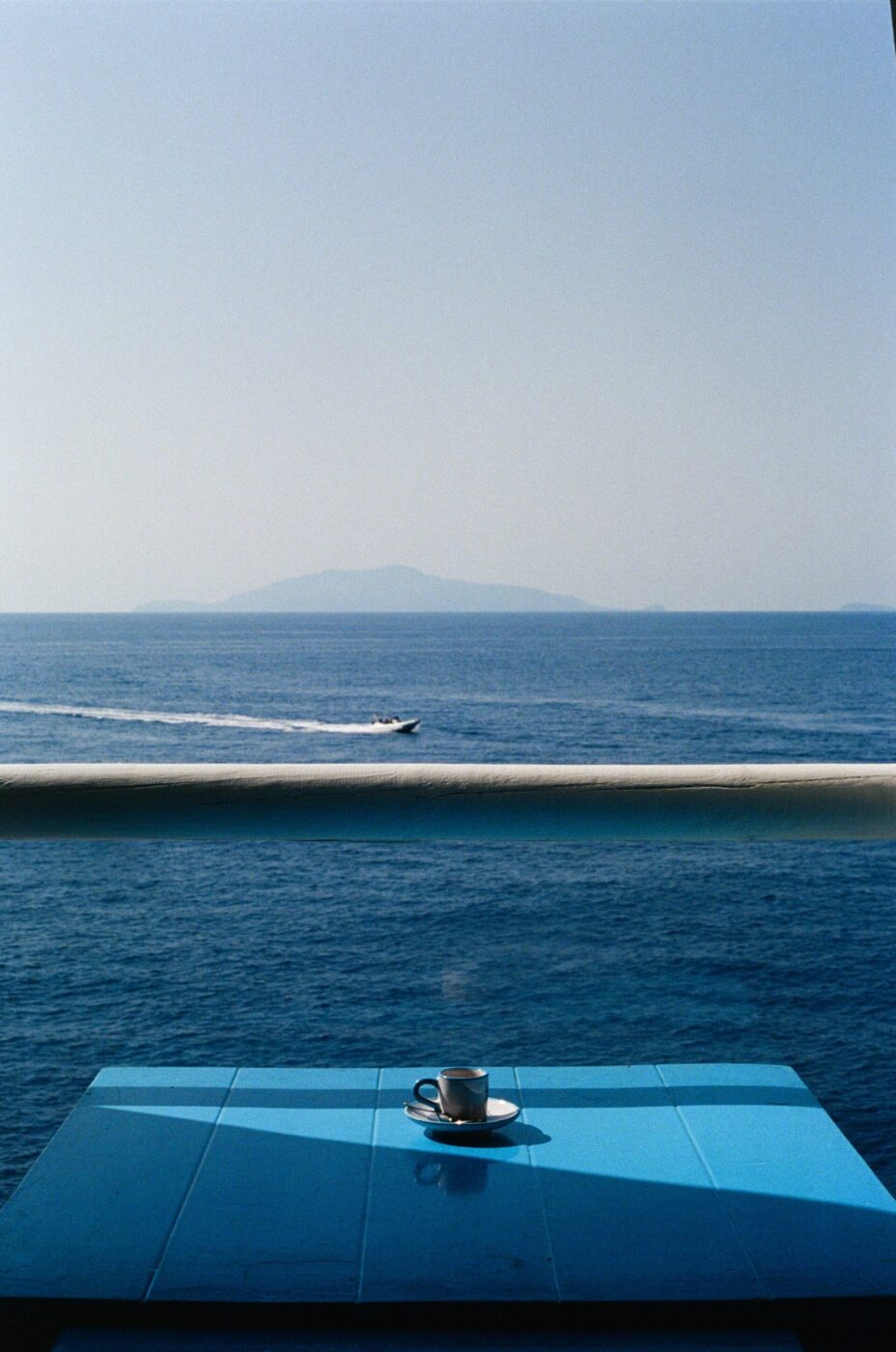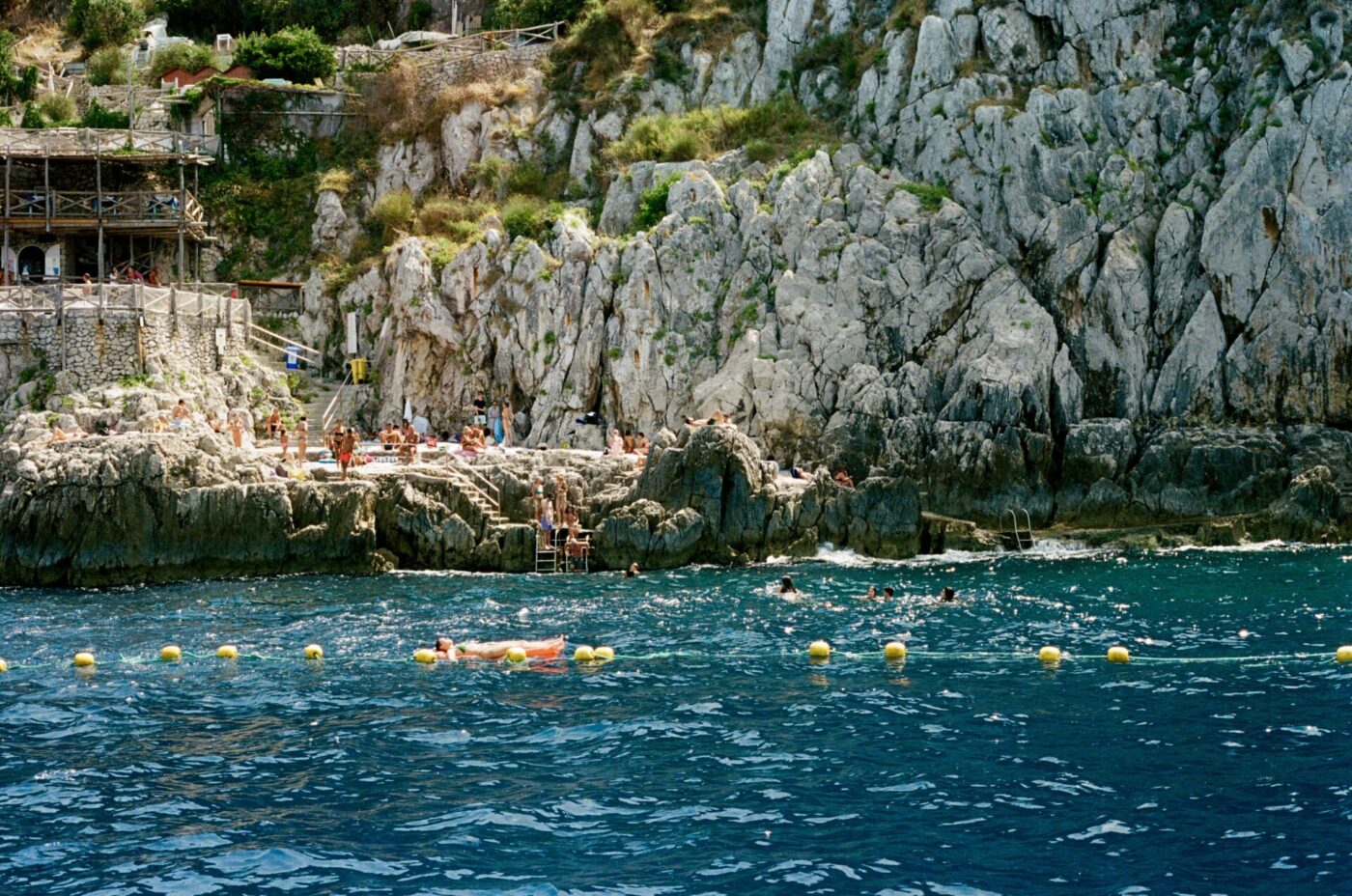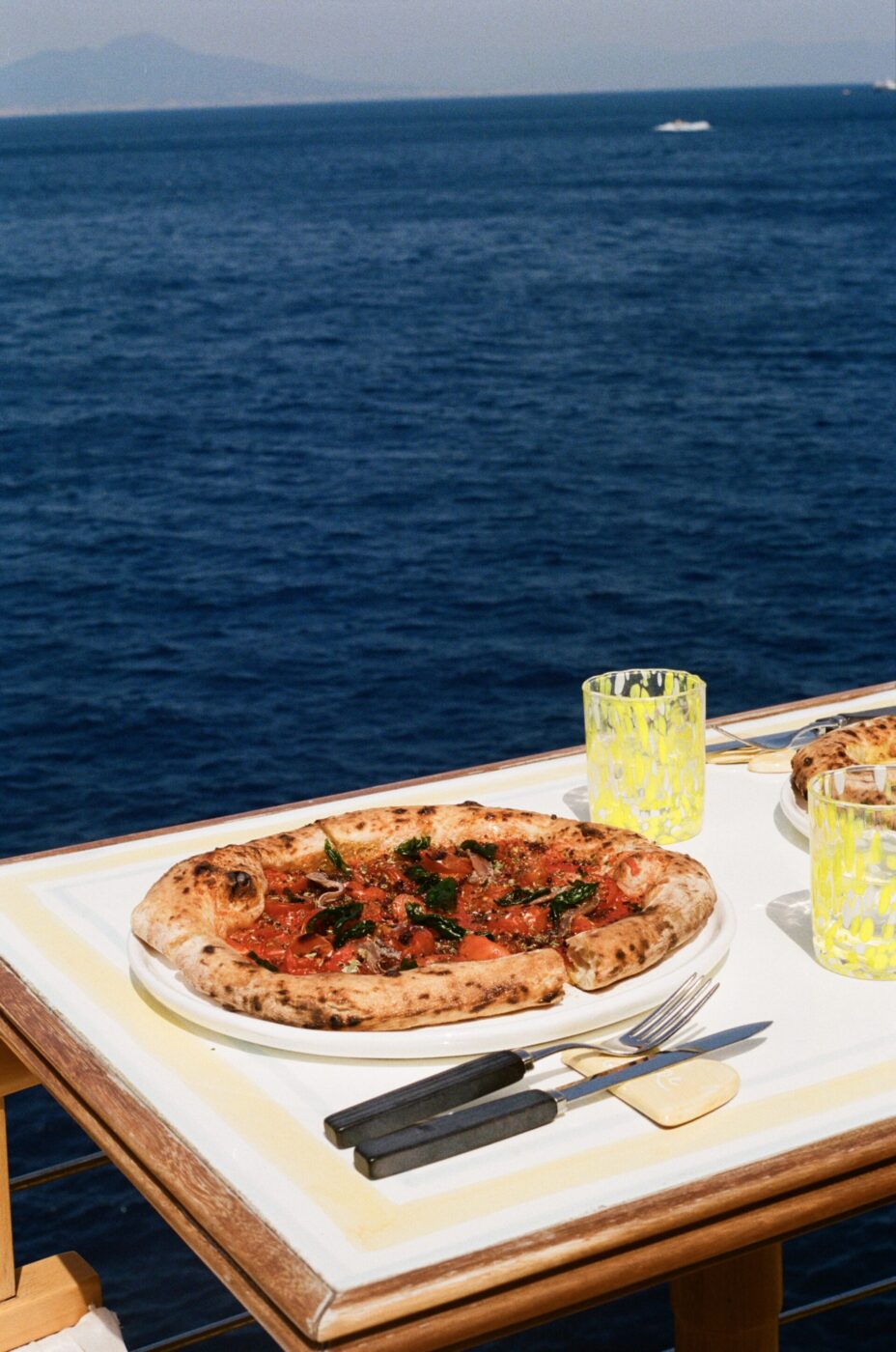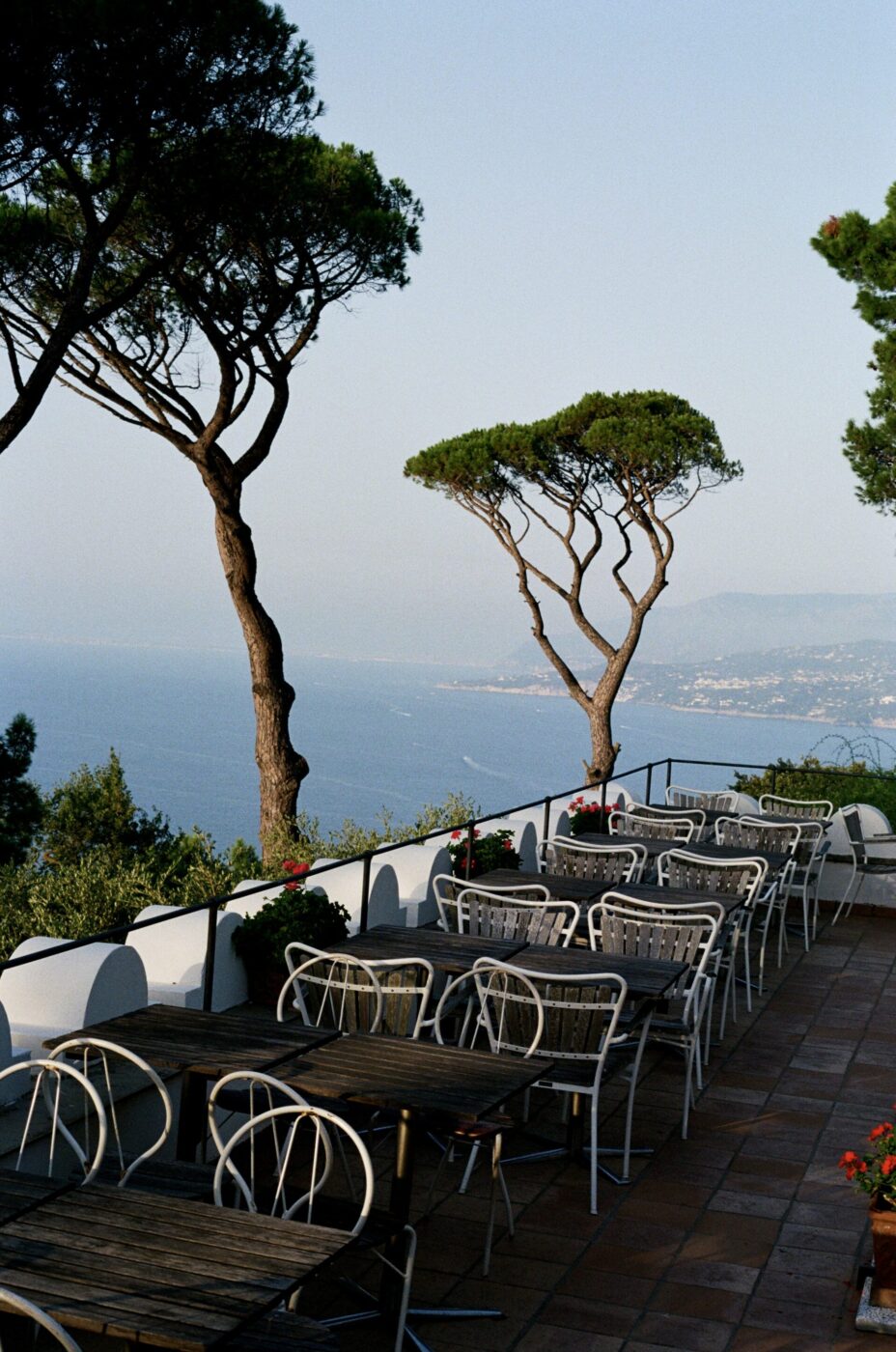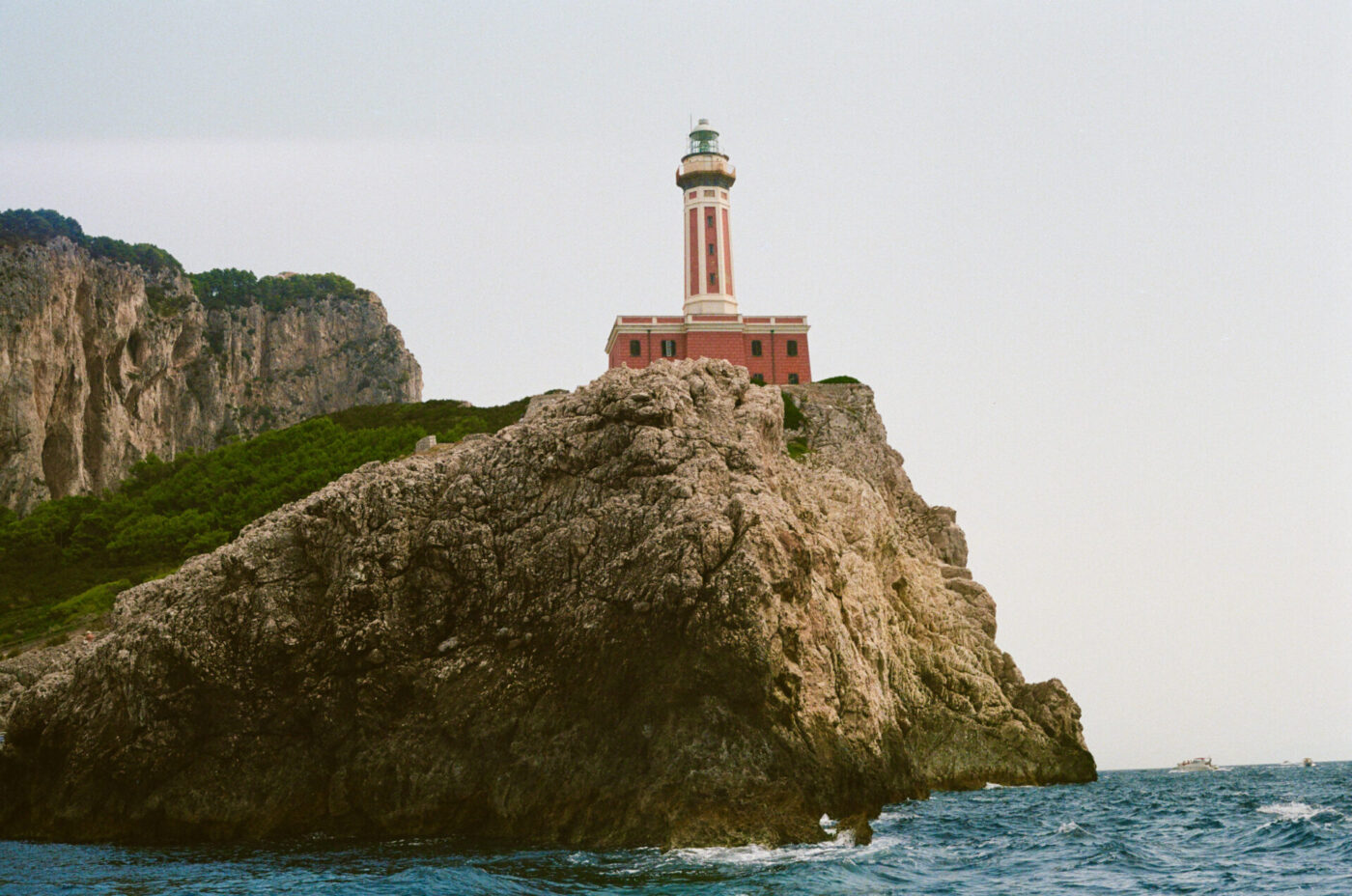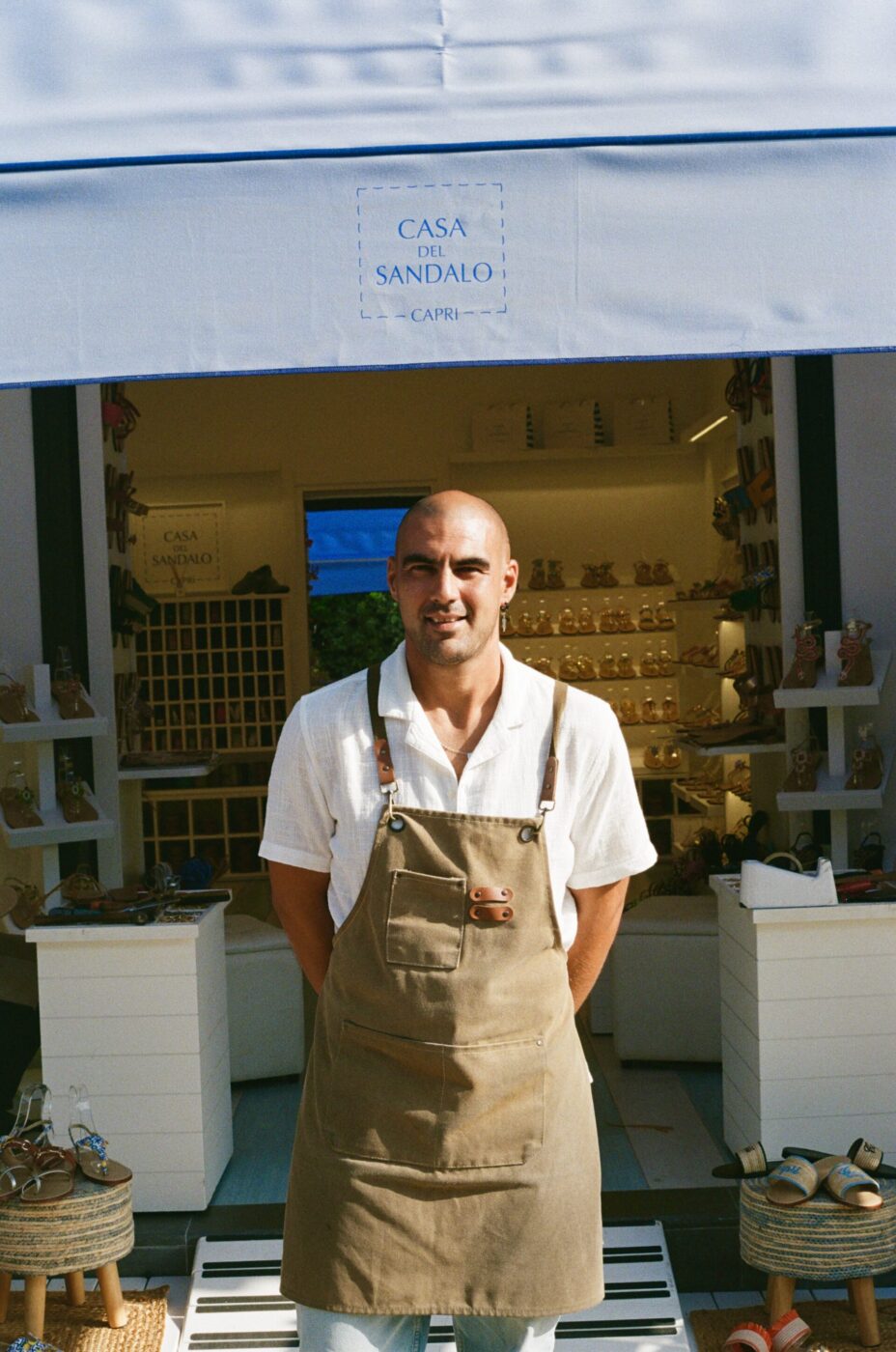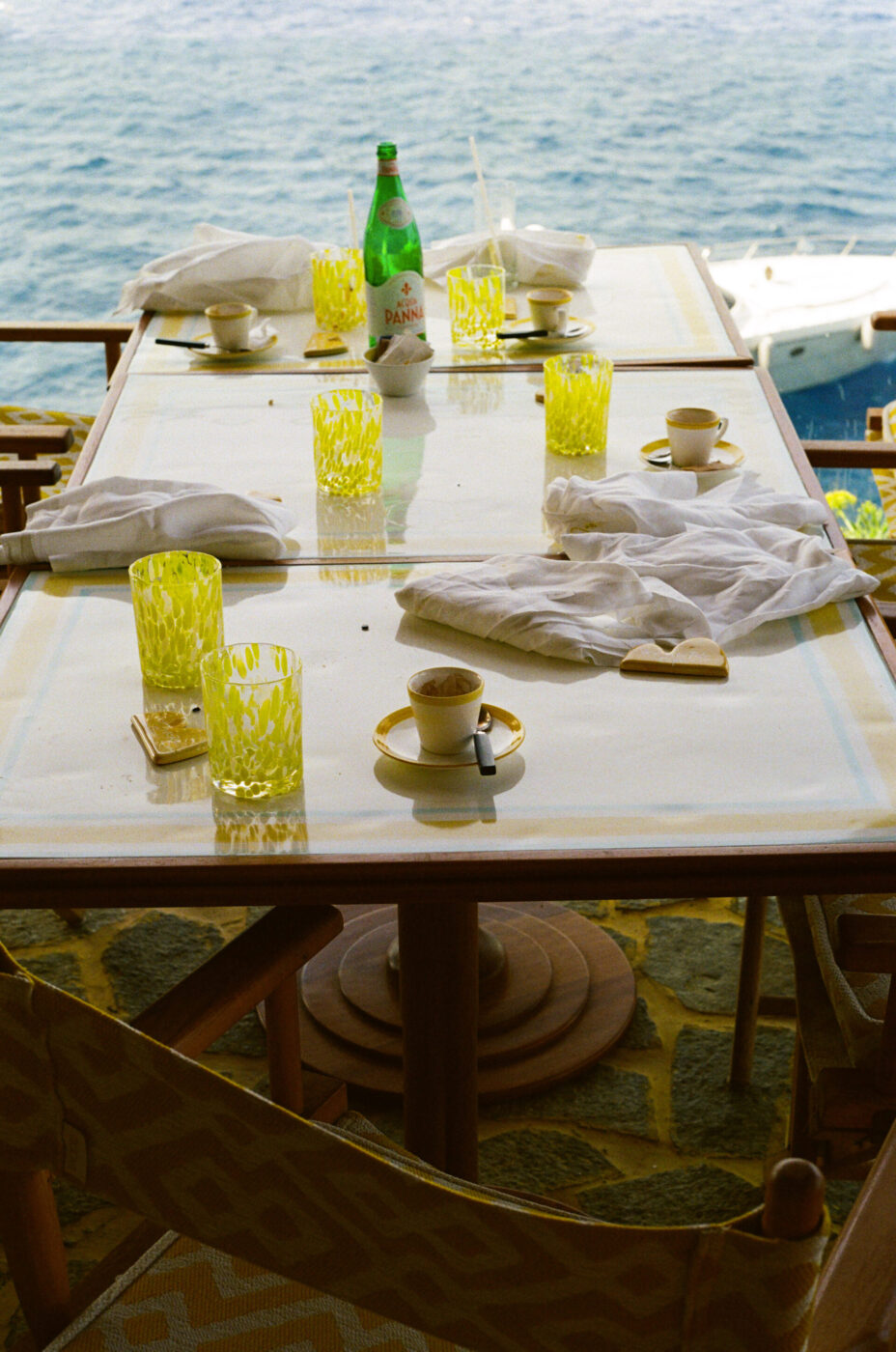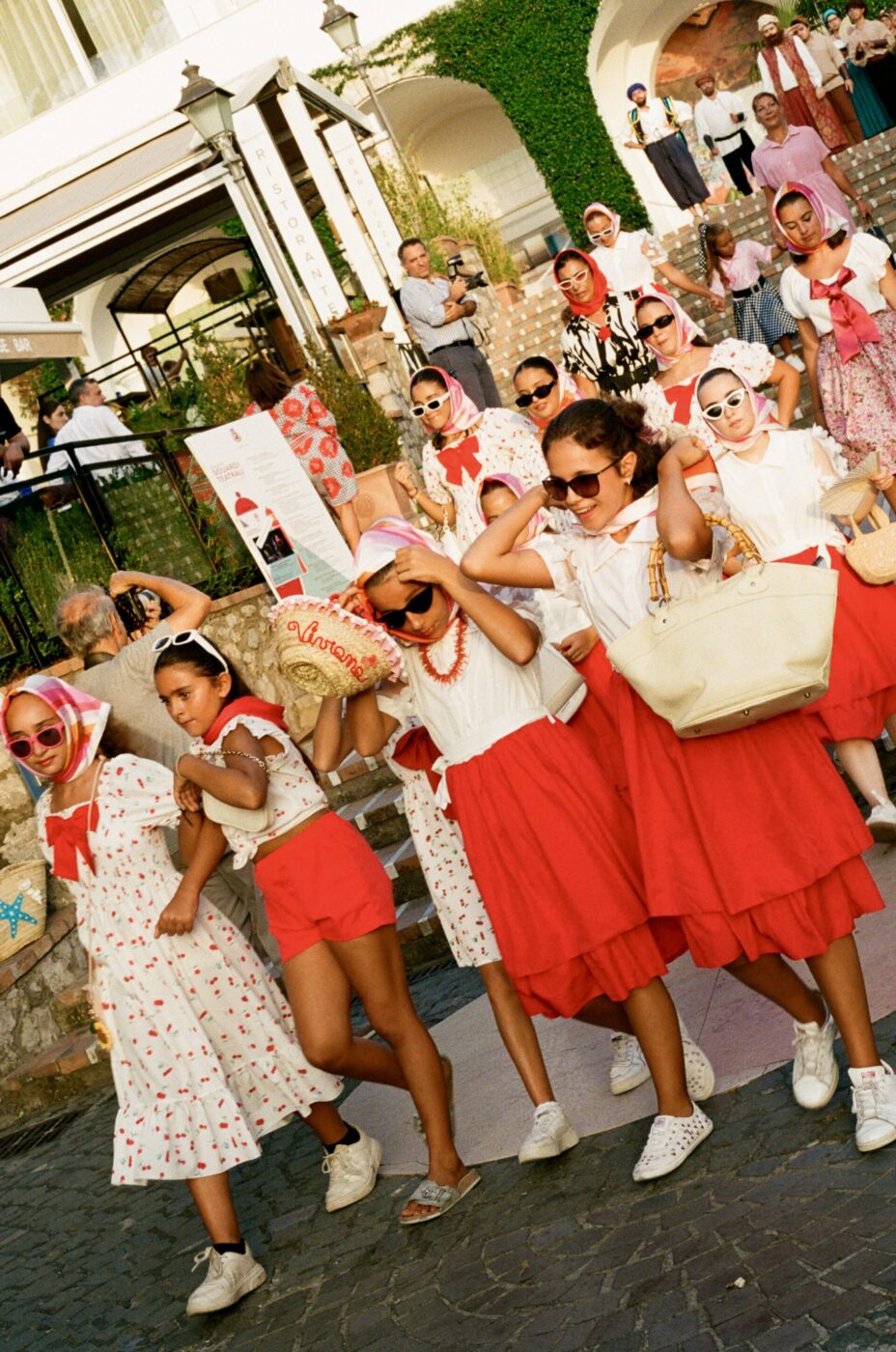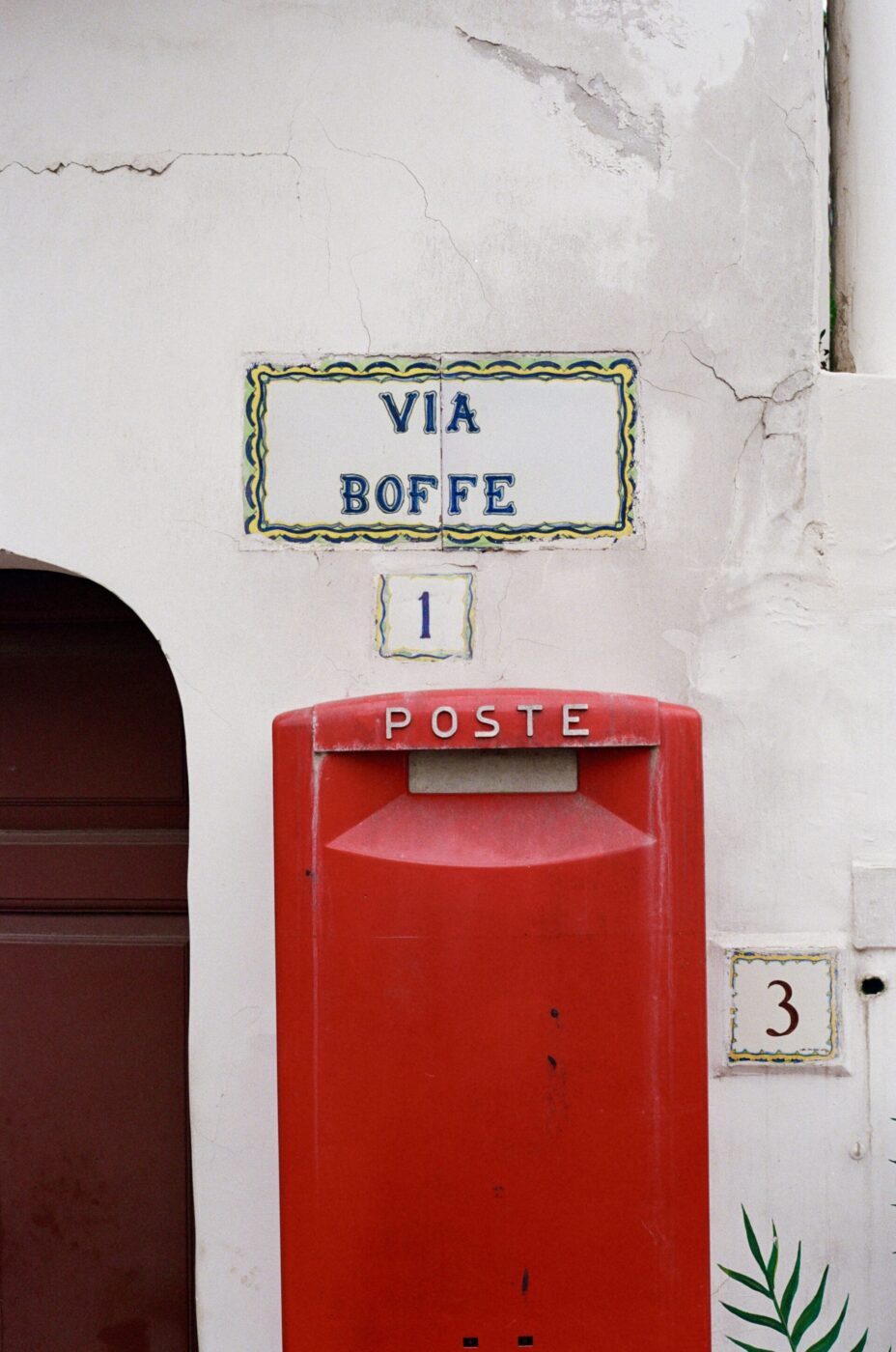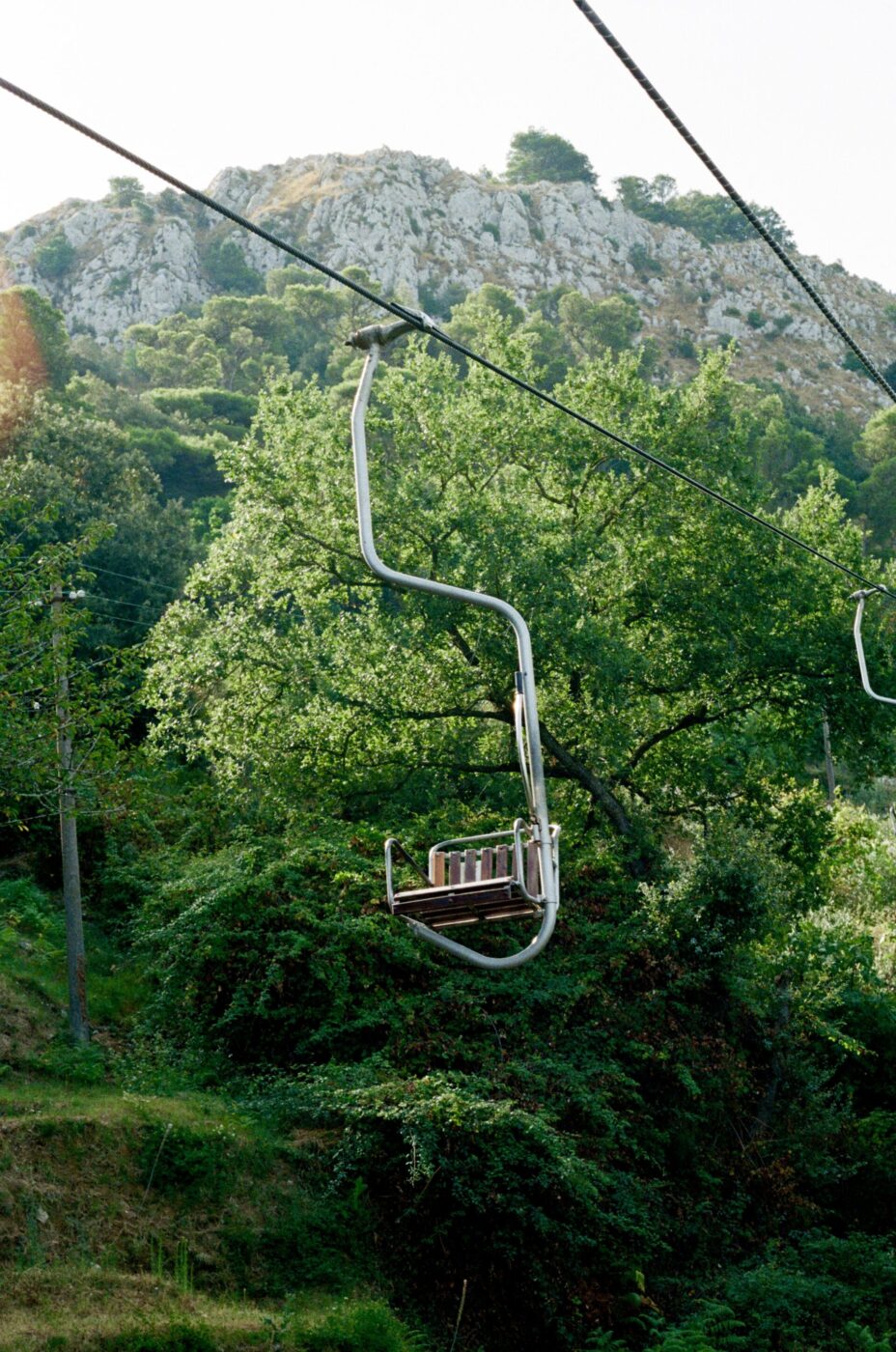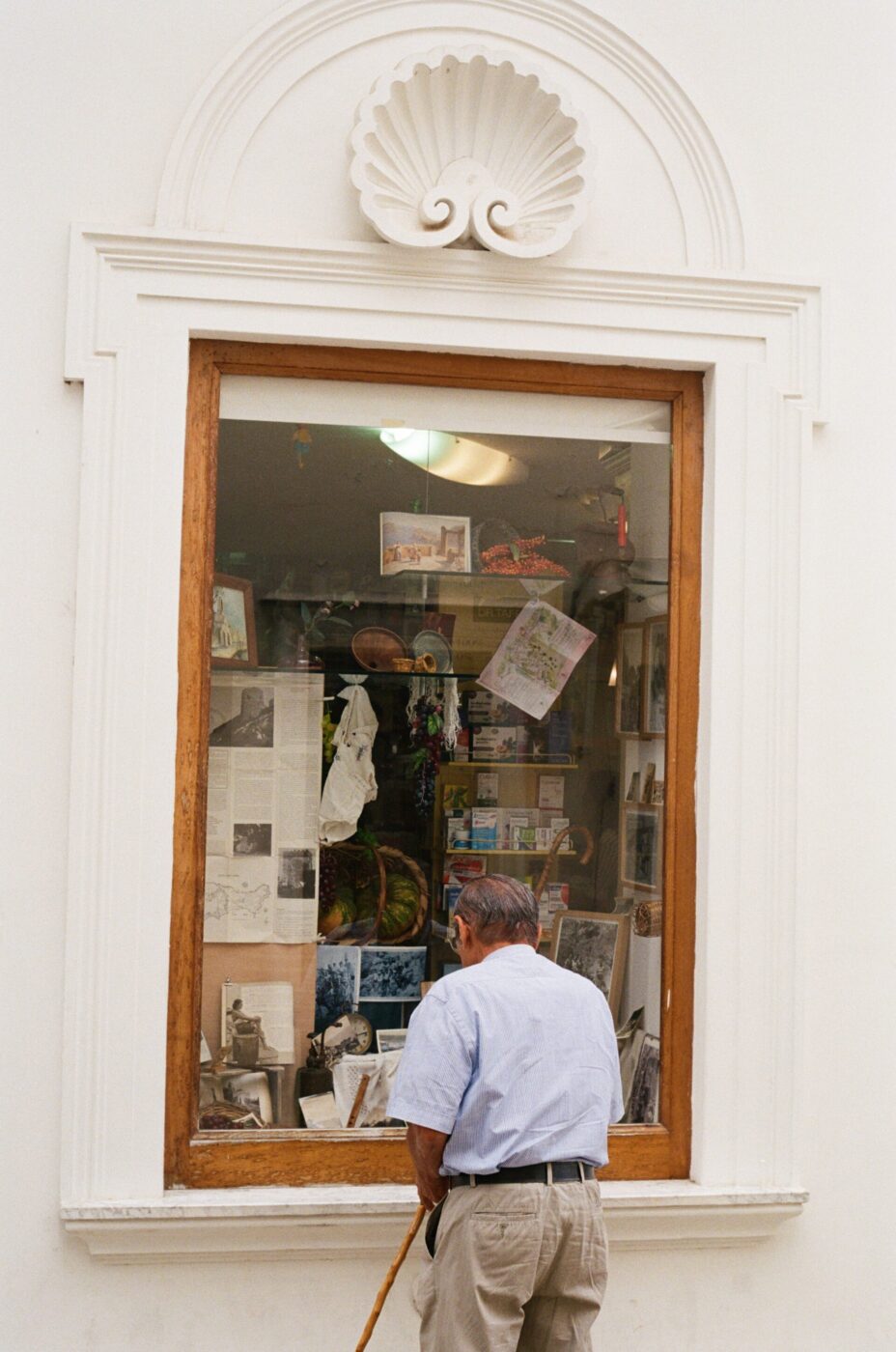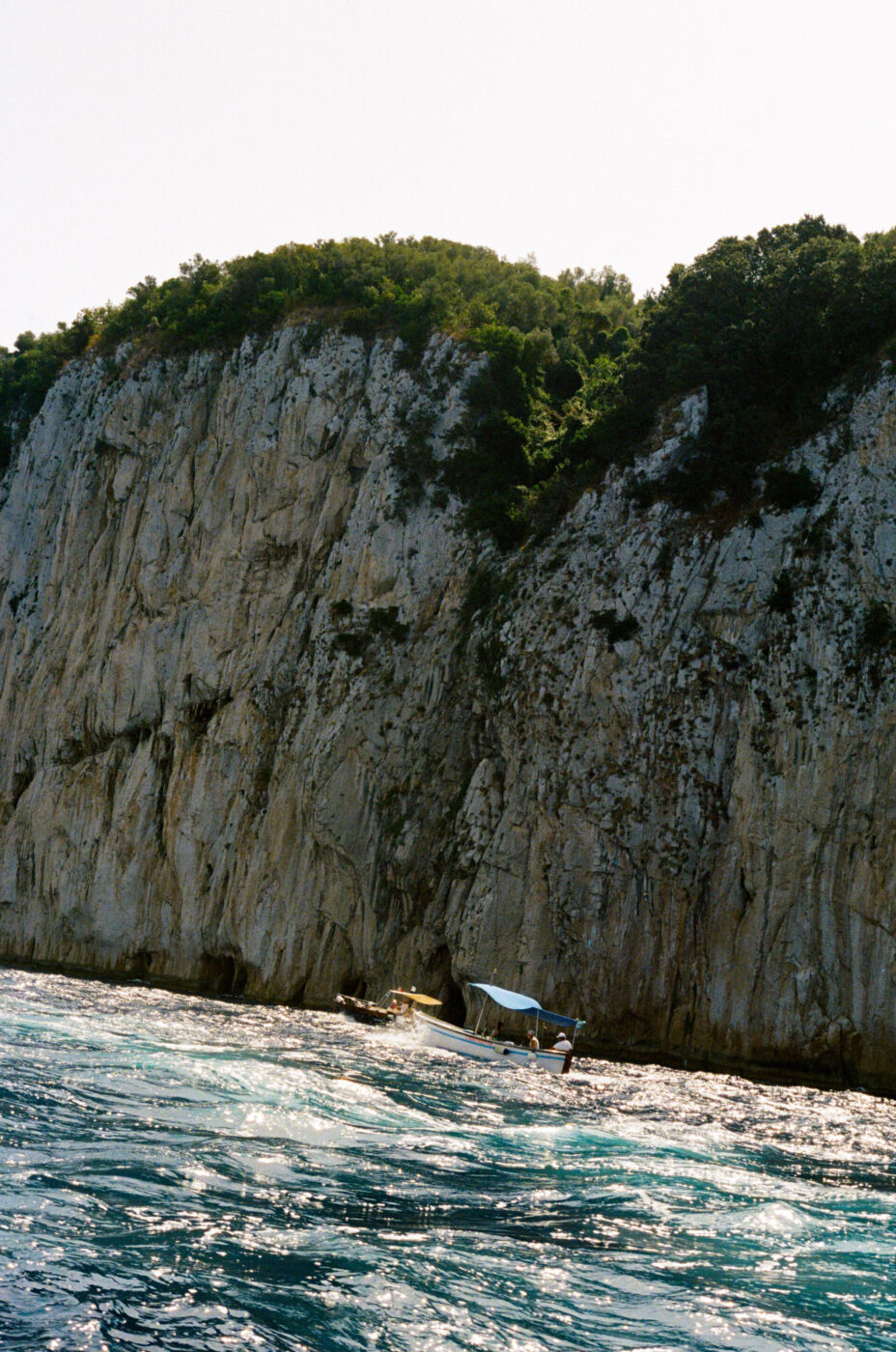“They call us the ‘ciamurri,’” says Signora Rosa, rolling out the ravioli capresi as her mother and grandmother did before her. “We Anacapresi are the conservateurs. Capri has always been another world—there you earned well. Here, instead, we kept cows, made our own caciotta. The ravioli came from our milk… a marvel.”
Separated by Capri by a winding road, Anacapri, which refers to both the area and town that covers the western half of Isola di Capri, is a far cry from the crowds pouring off the hydrofoils, the overwhelming lines for funiculars and taxis, the stores selling clothes printed like blue majolica, and the selfie sticks threatening to knock lemons out of the trees. Perched high above the sea, its name—from the Greek anás, “above”—hints at its distance from the bustle below. It’s the highest part of the island, once home to mountaineers and farmers.
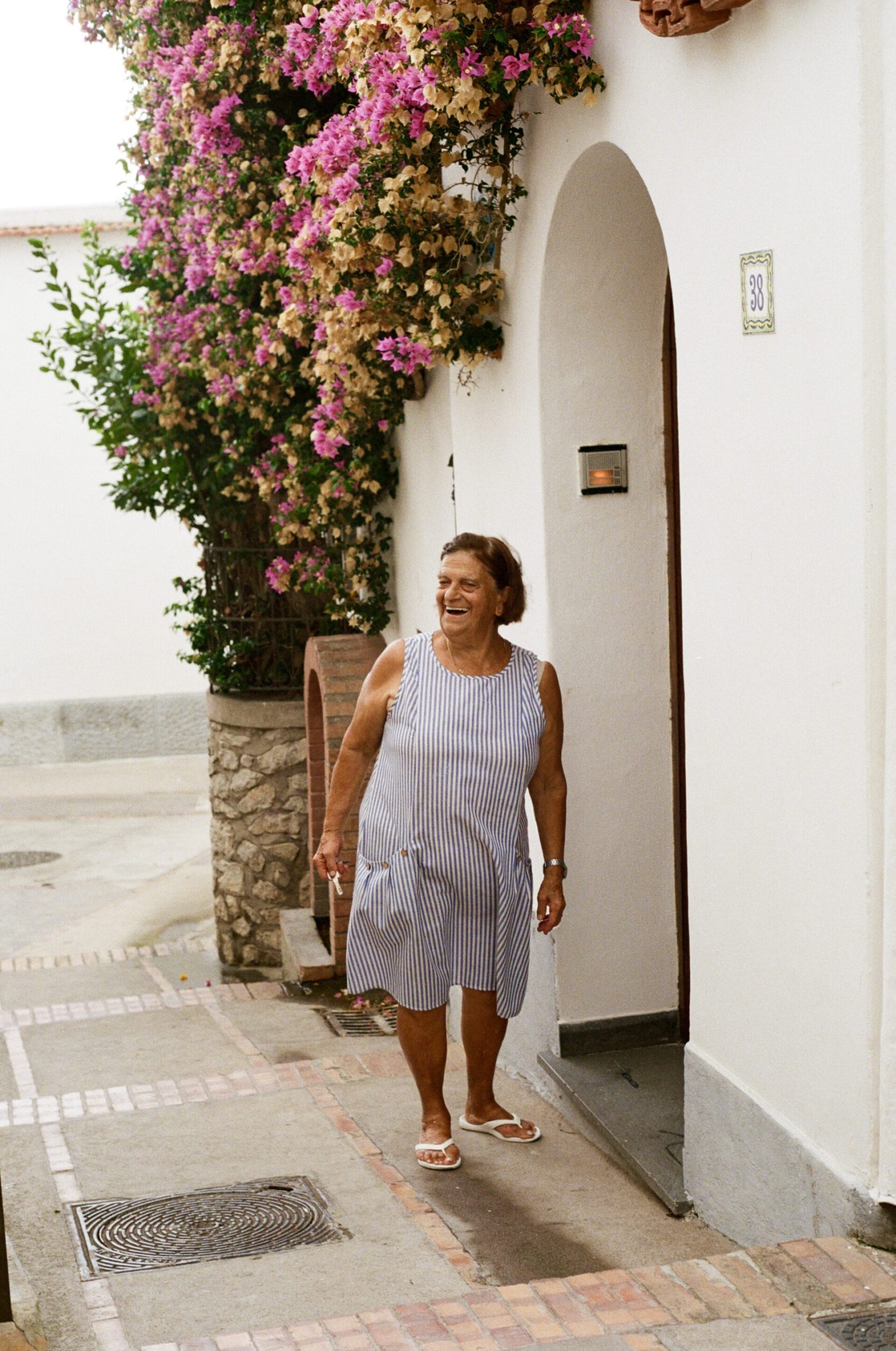
Signora Rosa and her family have been residents of Anacapri for generations
For residents like Patrizia Costante, an artist and craftswoman who now creates murals, ceramics, and more here after years spent away from the island, the village offers a rare kind of calm. “I married an Anacaprese boy. At first I didn’t accept the change, but then I found in Anacapri a tranquility, a familiarity, a union, a sense of community that I no longer felt in Capri. I have peace here; I feel safe.”
Anacapri is a curious mix of the traditional and the contemporary: you’ll encounter annual religious festivals like Sant’Antonio’s procession and the Settembrata—during which pavements are decorated with “carpets” woven from broom blossoms and other petals as a form of folk art—alongside olive groves that double as open-air modern art museums. Here you’ll also find an 18th-century church with a world-famous mosaic floor, a former house-museum and Swedish cultural institute, and the Jumeirah Capri Palace hotel, whose walls are adorned with works by Schifano, Pomodoro, and De Chirico, as well as ever changing pieces by contemporary artists.
In the early afternoon, when everyone is resting, the light falls in shards across the empty alleys of Le Boffe, Anacapri’s oldest neighborhood—and you can hardly believe you’re on the same island as the Marina Grande. Here, our guide to this side of the island, not the glossy Capri everyone knows.
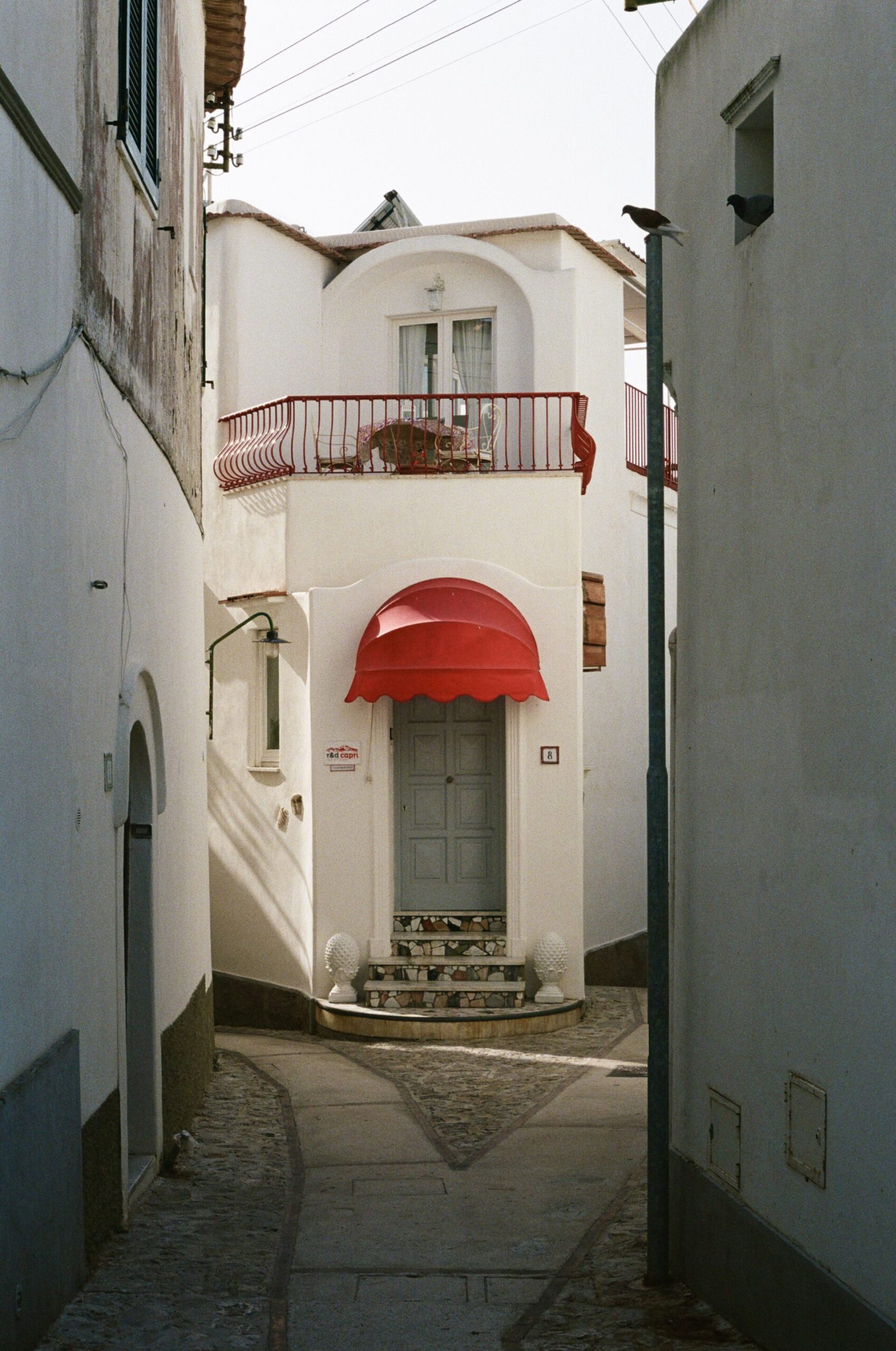
Boffe neighborhood
WHAT TO DO IN ANACAPRI
Le Boffe – With its Saracen arches and labyrinthine alleys, Anacapri’s oldest neighborhood offers tiny alimentari, hidden churches, and an old mill. The neighborhood was traditionally home to fishermen and farmers, who lived in houses with barrel vaults—called “boffa” in local dialect—that resemble puffed loaves of bread, and the central Piazza Di Tunisi was the first seat of Anacapri’s government. From late August through September, Le Boffe is at its liveliest for the Settembrata: a gastronomic festival that fills the tiny, whitewashed streets with food, wine, and music.
Villa San Michele – Axel Munthe, the Swedish doctor and writer, wanted a house “to open to sun and wind and the voice of the sea, like a Greek temple, and light, light, light everywhere!” Between 1897 and 1900, he made that vision real, raising a whitewashed villa complete with loggias stitched by a colonnaded pergola, Roman fragments and sarcophagi turned into fountains inlaid along the walls, and terraced gardens of cypress, lemon, and wisteria. After his death, the villa was left to the Swedish state, becoming a house-museum and a cultural institute for encounters between Sweden and Italy, which today hosts the world’s largest Swedish fellowship program. Recently, the villa opened a permanent exhibition that celebrates the eccentric spirit of Luisa Casati Stampa, who actually rented the villa from Munthe in the 1920s.
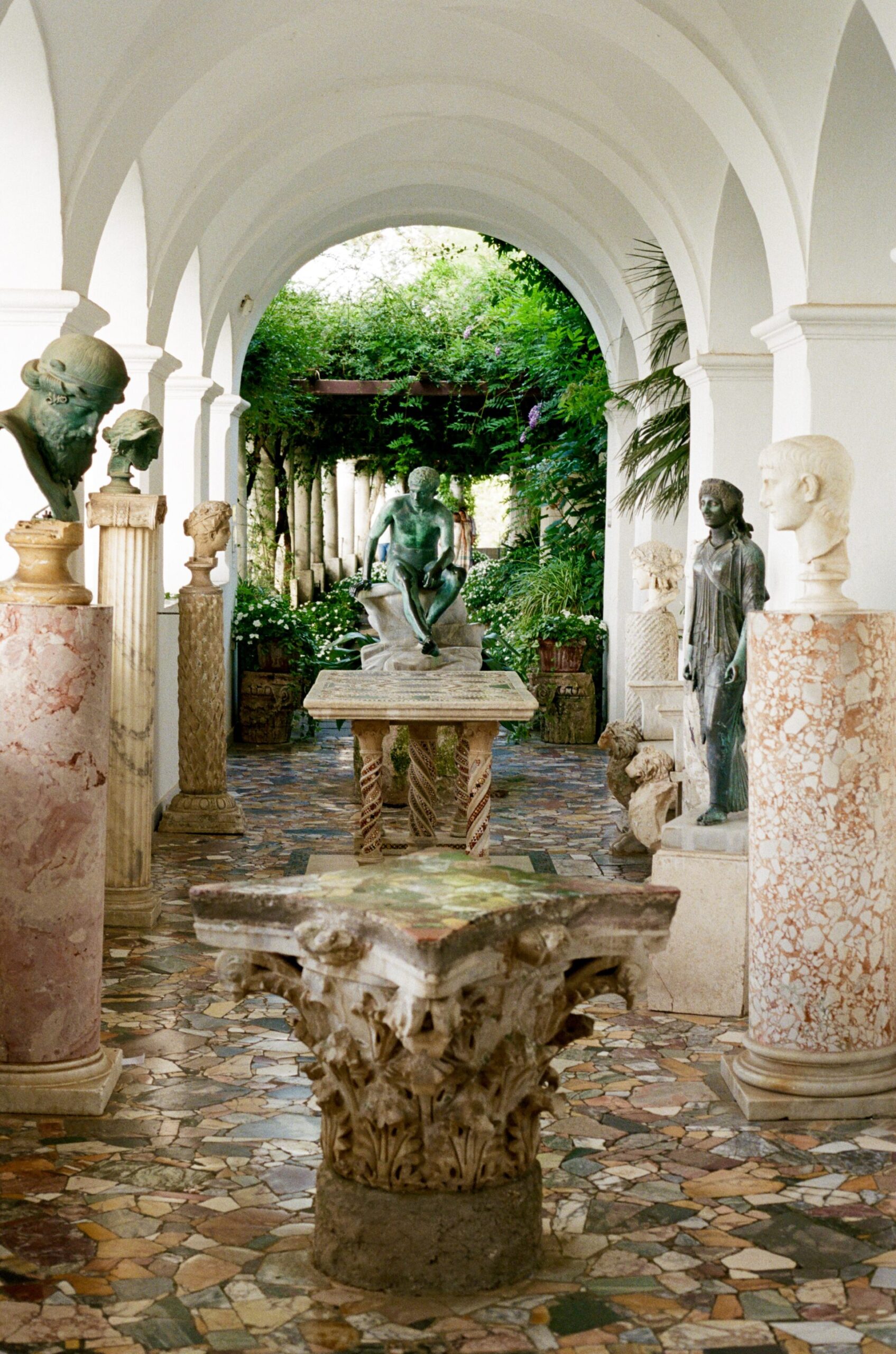
Villa San Michele
Faro di Punta Carena – As the day draws to a close, take a 30-minute walk from Anacapri’s main square to this lighthouse for the island’s most beautiful sunset. Active since 1867, the lighthouse shines 25 nautical miles (about 46 km) into the Mediterranean, welcoming sailors, tourists, and fishermen back to Capri. You can swim at the rocky beach nearby, or stop at Bar Faro for an aperitivo with a view. Don’t miss the sign “baciarsi è obbligatorio”, “kissing is required”.
Il Sentiero dei Fortini – This “Path of the Forts” leads along ledges, promontories, and deep bays of turquoise waters from the lighthouse to the Blue Grotto. Along the way, you’ll encounter three ancient military posts—Orrico, Pino, and Mesola—for spotting enemies and defending the island, originally built by the English in 1806 and later reinforced by the French. The whole route takes about three hours with some hefty inclines, so comfortable shoes, a hunk of focaccia, a hat, and a bathing suit for swimming at the end (near the lighthouse) are suggested. It’s particularly nice in the low season, when it’s less crowded and the sun isn’t as strong.
Seggiovia per Monte Solaro – We’re firm believers that the journey is just as beautiful as the destination, and this chairlift on Monte Solaro agrees. Go at opening time—9:15 AM or 9:30 AM depending on the time of year—to avoid crowds and enjoy the view of Faraglioni all to yourself. In just 13 minutes, you’ll soar up to 589 meters—the highest point in Capri—over vineyards and forests, until Anacapri is a mosaic of little houses below and you have a 360° view over the island (try and spot Vesuvius!). First built in 1952 by engineer Uliscia, the chairlift was refurbished in 1999. At the top, you can hike around and explore the Bruto Fort, built in 1806. Hikers can trek one way and ride the chairlift the other.
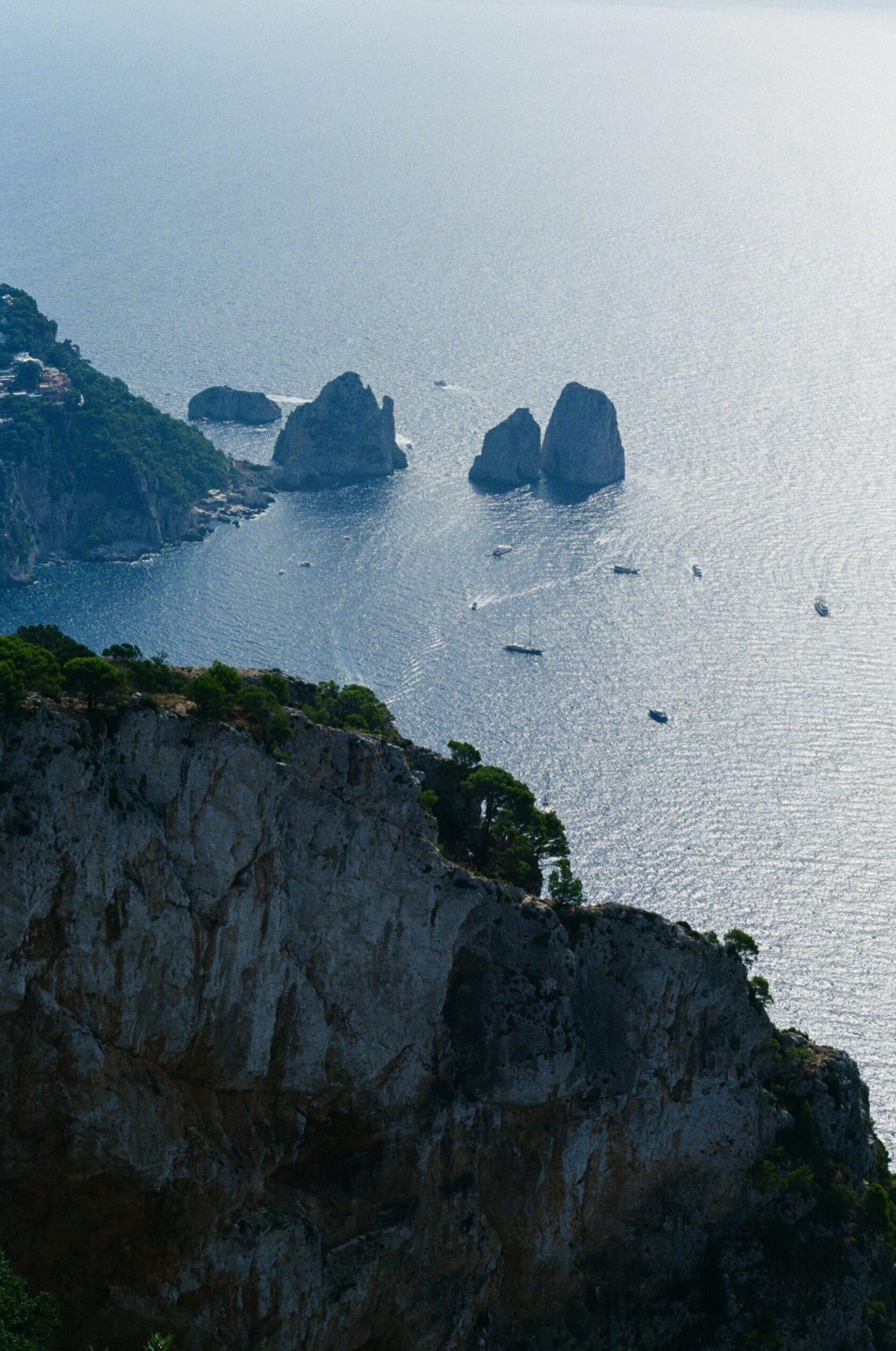
View from the top of Monte Solaro
Hermitage of Santa Maria di Cetrella – From the top of the chairlift (or via a two hour trek from the village center), head along a dirt path to the Hermitage of Cetrella, a small white building embedded in the rock of the Monte Solaro and suspended over the Marina Piccola. Built in the 15th century, the humble hermitage features two small naves: one devoted to the Madonna and the other home to a 16th-century St. Dominic. In the past, it was a pilgrimage destination for Caprese sailors, who climbed there to pray before dangerous coral-collecting expeditions. Its name may come from the cedronella plant that once grew here—or, as legend has it, from a temple to Venus Citerea. Once cared for by the Capuchin friars and now by Caprese volunteers, the hermitage also offers great views of the Faraglioni; wear comfortable shoes and double check opening hours.
Casa Rossa – It’s impossible to miss this “Red House” on Anacapri’s main street thanks to its characteristic deep red color and identifiable Aragonese tower. Once the home of eccentric American colonel John Clay MacKowen—who built it in 1899—today it’s an incredible house-museum that boasts archaeological finds and a majolica cupola. The most famous objects here include four Roman nymph statues, discovered on the bottom of the Blue Grotto about 50 years ago—evidence of Emperor Tiberius’ presence, who chose Capri as his preferred residence from 27 to 37 AD. (He governed the empire from here: a Roman-era version of smart working.)
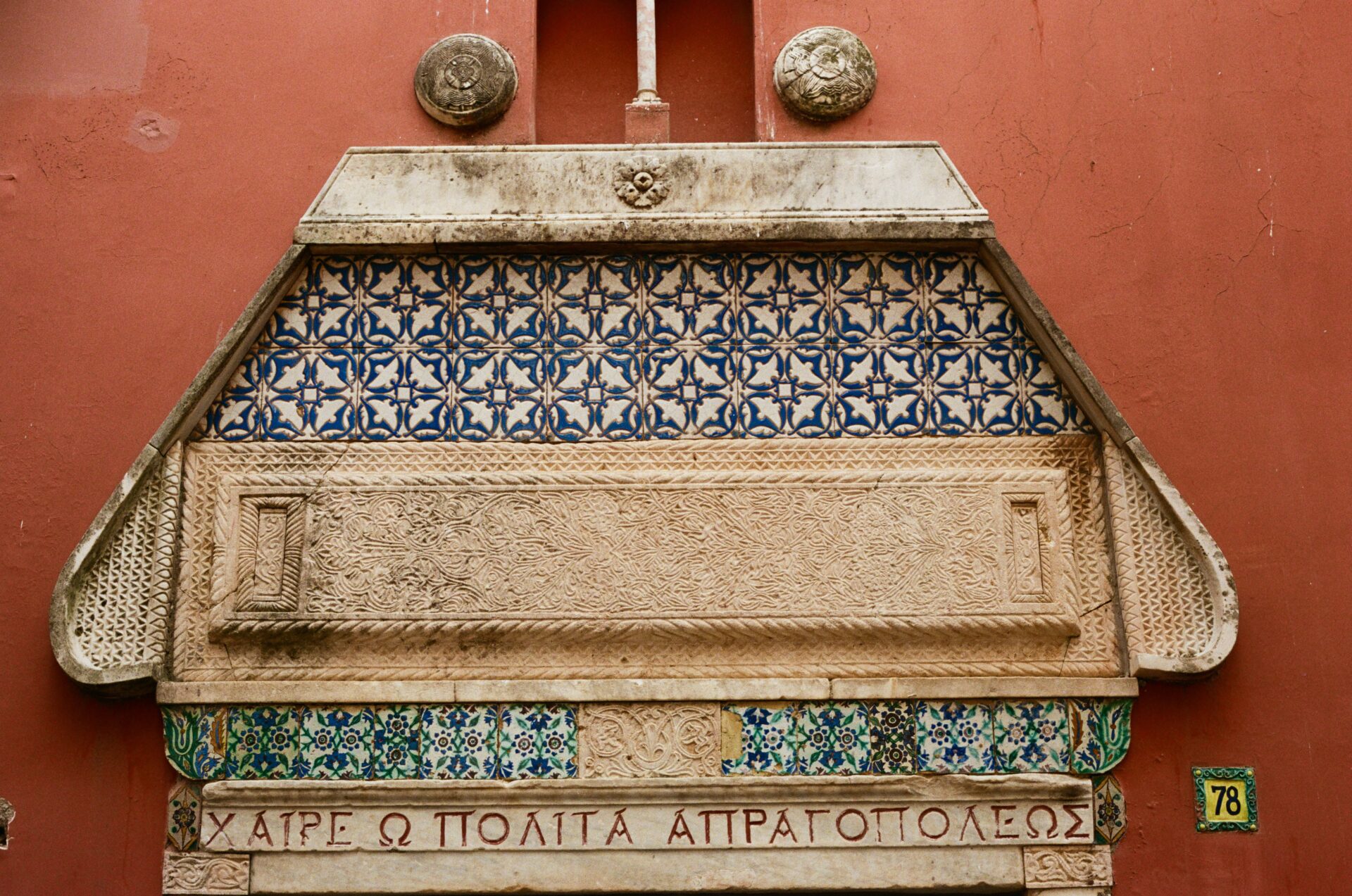
Casa Rossa
Church of San Michele – Located in Piazza San Nicola, this tiny church, built in 1719, packs a huge punch. Not only is it one of the most important examples of the 18th-century Neapolitan school, but you can’t miss the insane majolica floor (which, by the way, you can’t walk on). Created in 1761 by Leonardo Chiaiese, the scene depicts Adam and Eve’s expulsion from the Garden of Eden, complete with life-like animals and the serpent deceptively wrapped around the tree of knowledge.
Procession of Sant’Antonio – Every June 13th, Anacapri celebrates its patron saint. The town and Church of Santa Sofia are draped in colorful fabrics and lights a week before, setting the stage for the procession of the wooden bust on the 13th. Children dressed as little angels and monacelli (little monks) carry the traditional “bread of Sant’Antonio,” while residents toss rose petals from balconies. Each district is decorated with carpets of brooms and bright flowers, and stalls sell food and gadgets to all in attendance.
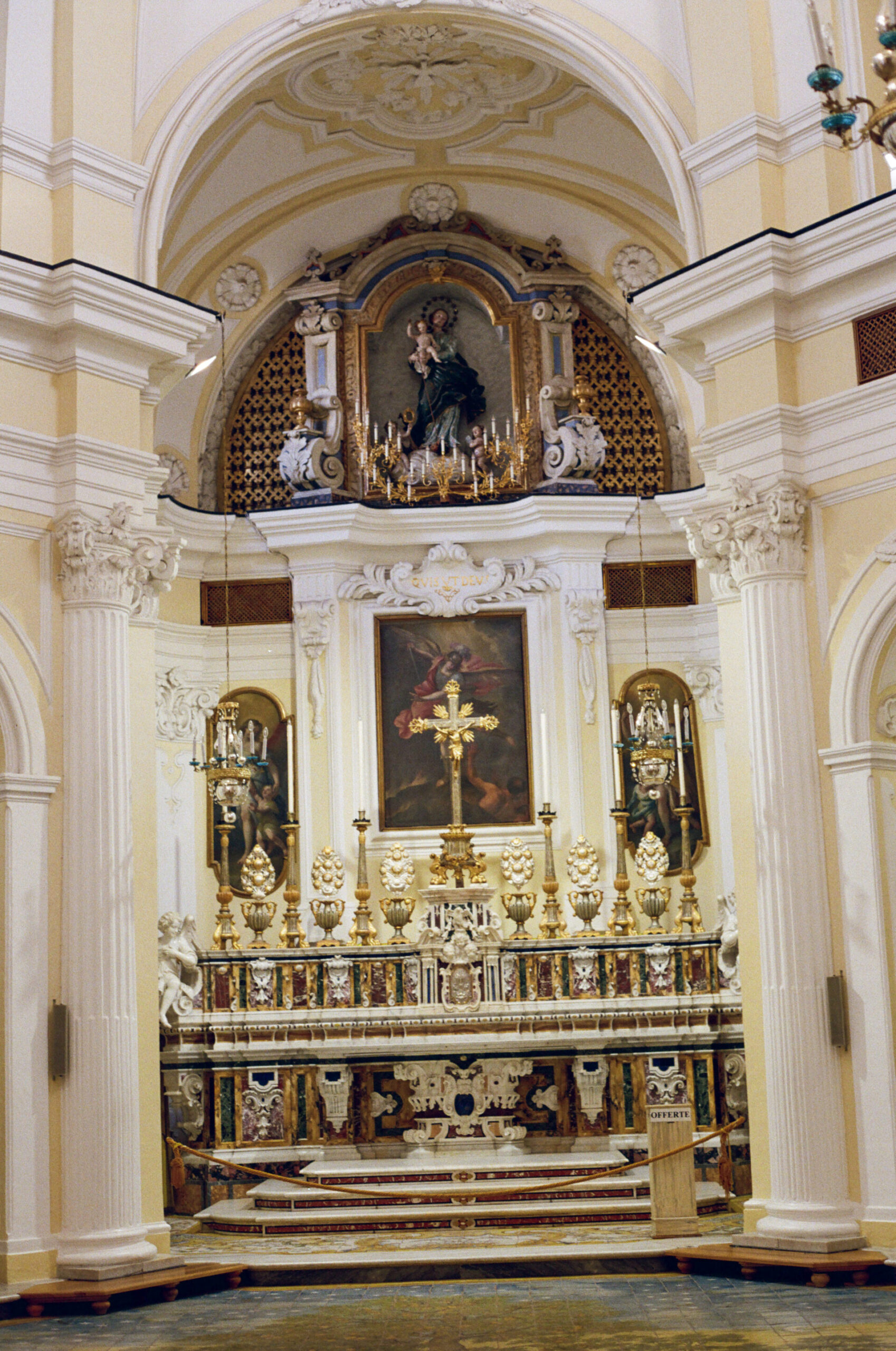
Church of San Michele
WHERE TO EAT IN ANACAPRI
Il Riccio – “It’s not just about a meal: our guests must leave the table ecstatic,” says head chef Salvatore Elefante. And that’s exactly the case here, a feast for all the senses. Located above the Blue Grotto, with a terrace suspended over the sea, it’s probably the most photographed beach club in the Mediterranean—and for good reason. Resident Chef Anna Vichi’s food menu lives up to the price tag and unbeatable setting, and their infamous “stanza delle tentazioni” (“temptation room”) is chock-full of desserts as sweet as the view. Order the spaghetti al riccio (spaghetti with sea urchin) and the amberjack tartare, and settle in for a magnificent experience.
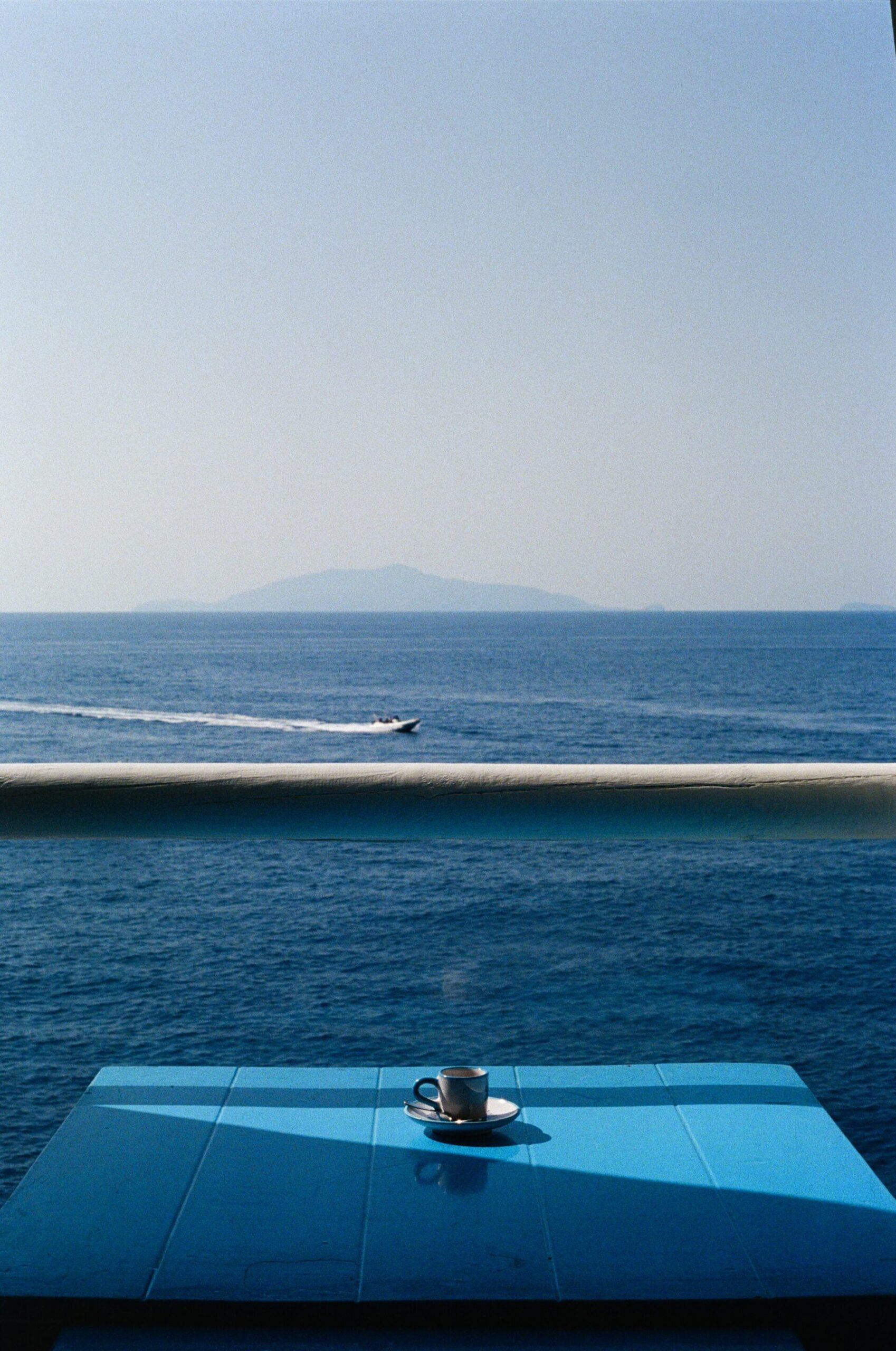
Il Riccio
Gradola – This family-run spot, where Capresi still meet at 4 PM to play tresette, feels like it’s from another era. The no-frills beach club/restaurant is located on a rocky terrace, right next to the Blue Grotto with views over a sea so blue there should be another shade to describe it. Grab the Gradola sandwich—bread, fried eggplant, tomato, and mozzarella—between dips, or come for dinner with the backdrop of the sunset and traditional plates like eggplant meatballs.
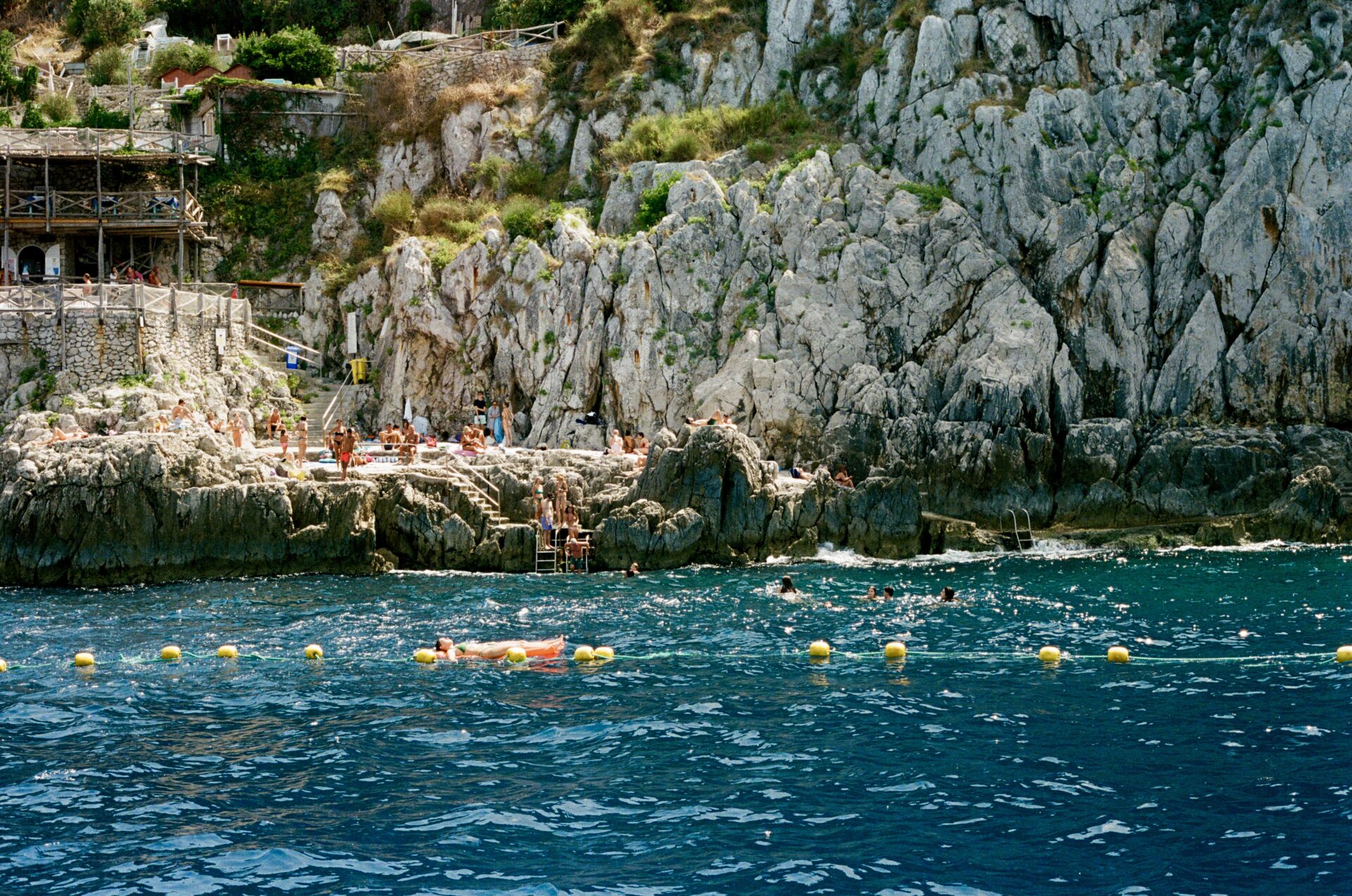
Columbus Capri – Columbus is one of the few restaurants on the island that uses truly local produce, sourced from owners Vincenzo and Sabina’s garden. Next to the base of the Monte Solaro chairlift (which makes it a great stop pre- or post-ride), the small, vine-covered terrace overlooks the main square of Anacapri—lovely for people watching in the day and for a more chill atmosphere at night. Get the octopus meatballs and the scialatielli with clams and cicerchie—with lots of their homemade bread for scarpetta—and the torta caprese to finish.
a-Ma-Re Capri – Right next to Il Riccio and also hanging over the sea, this restaurant—marked by cheery yellow accents—is perfect for a slightly more casual lunch with the same fantastic view. Head Chef Nicola Giovanni Maiello is joined by one of Naples’ most famous pizzaiolos, Franco Pepe, who shares that “The goal was to offer the most requested pizzas while also engaging with the chefs’ cuisine.” The two pizzas they created together are must orders: the a-Ma-Re—with yellow tomatoes, sweet caciotta cheese, mussels, lemon, pepper, and croutons—and Il Professore, with fiordilatte, eggplants, sundried tomato, pesto, and Provolone del Monaco. Don’t miss Chef Nicola’s rigatoni alla Nerano, either.
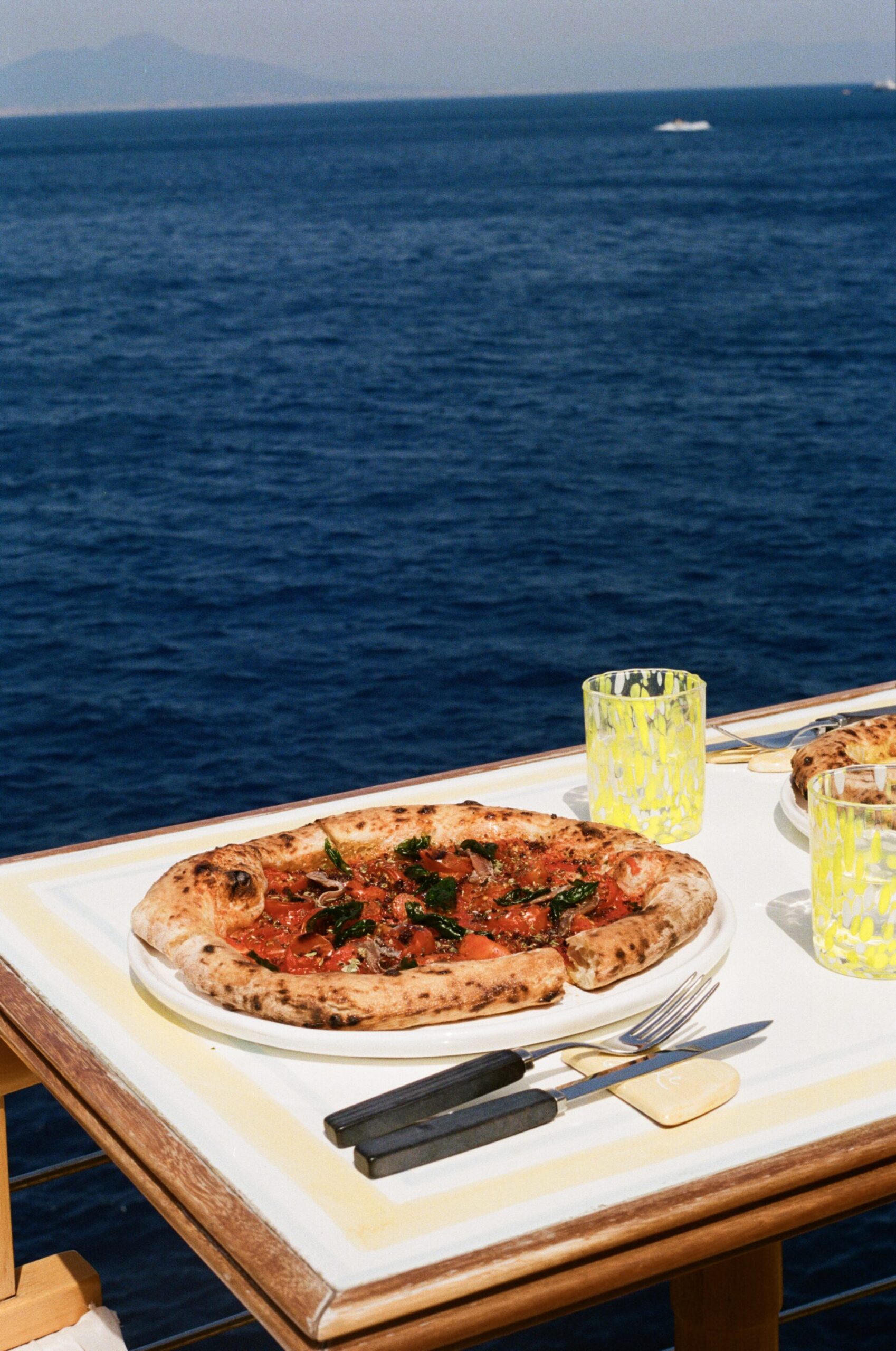
Pizza & a view at a-Ma-Re Capri
L’Olivo – Located inside the Jumeirah Capri Palace, L’Olivo is the only restaurant on the island to earn two Michelin stars for its excellent, contemporary Mediterranean cuisine. The dining room is minimalist and bright, and an elegant terrace offers sunset views over the sea. The kitchen at L’Olivo is guided by a trio: Culinary Director Andrea Migliaccio, Executive Chef Salvatore Elefante, and Resident Chef Vincenzo Tedeschi, who make light interpretations of Campanian culinary classics. They have three different tasting menus on offer, ranging from seven to nine dishes, plus a wide selection of a la carte offerings. Dishes change often, but if available, order the eliche con scoglio (pasta with shellfish) and l’orto (an assortment of vegetables with black truffle).
Da Gelsomina – On the Michelin guide since 1995, this landmark family-run classic features a terrace that frames the sunset. Generations of the same family have served classic island specialties here, from their must-try ravioli capresi to spaghetti alla chiummenzana. They harvest most of their produce from their garden, and serve rustic wines from their own vineyards.
Billy’s Bar – The rooftop café-bar of Villa San Michele is a must for insane views over the Bay of Naples and a simple, seasonal menu with Nordic touches. Thanks to the villa’s Swedish ties, you’ll find bites like a Skagen-style shrimp toast and a salmon sandwich with capers and dill alongside Mediterranean staples.
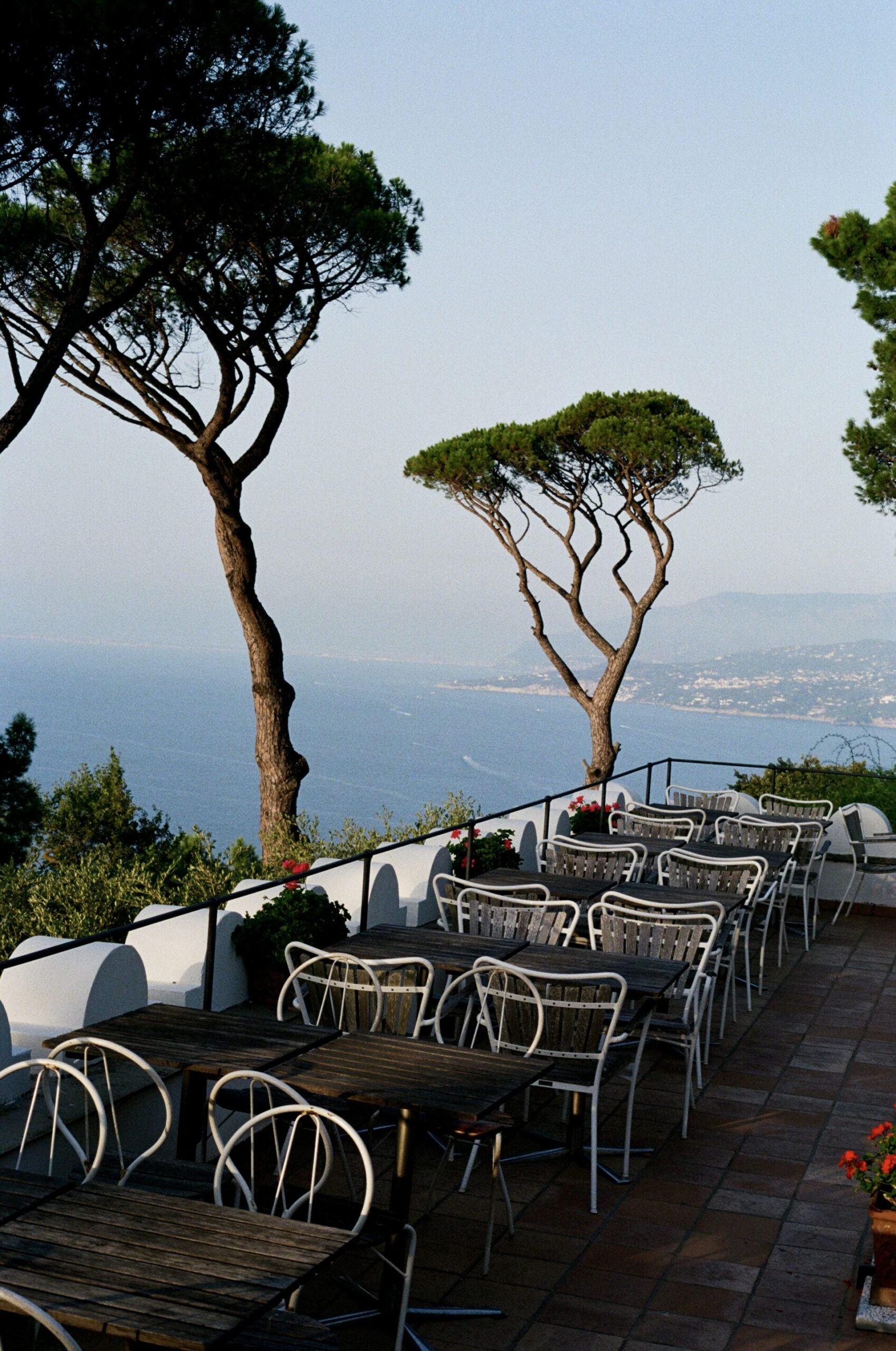
WHERE TO DRINK IN ANACAPRI
Bar Faro – A true Anacapri staple in tiny Piazza Caprile, Bar Faro is perfect for espresso in the morning and an easygoing aperitivo scene—spritzes and the usual potato chips, peanuts, olives—on the little terrace by late afternoon. It’s an ideal pit stop on the way to Punta Carena.
Vinoteca La Zagara – At the street-side wine bar of Casa Mariantonia, find a well-curated list of Italian labels, prosecco, and champagne by the glass, with cheese-and-charcuterie plates and other light bites. Sidewalk tables are perfect for people-watching.
Il Riccio Sea Lounge – If you’re in the market for a well-poured cocktail and a magnificent sunset, this is your spot. With sweeping views of the Mediterranean, this terrace bar, open everyday at 10:30 AM, is an elegant spot for soaking up some sun on cushioned loungers by day and grooving to live DJ sets all evening. If you get hungry, they offer a tight food menu with the same caliber as their sister restaurant, Il Riccio.
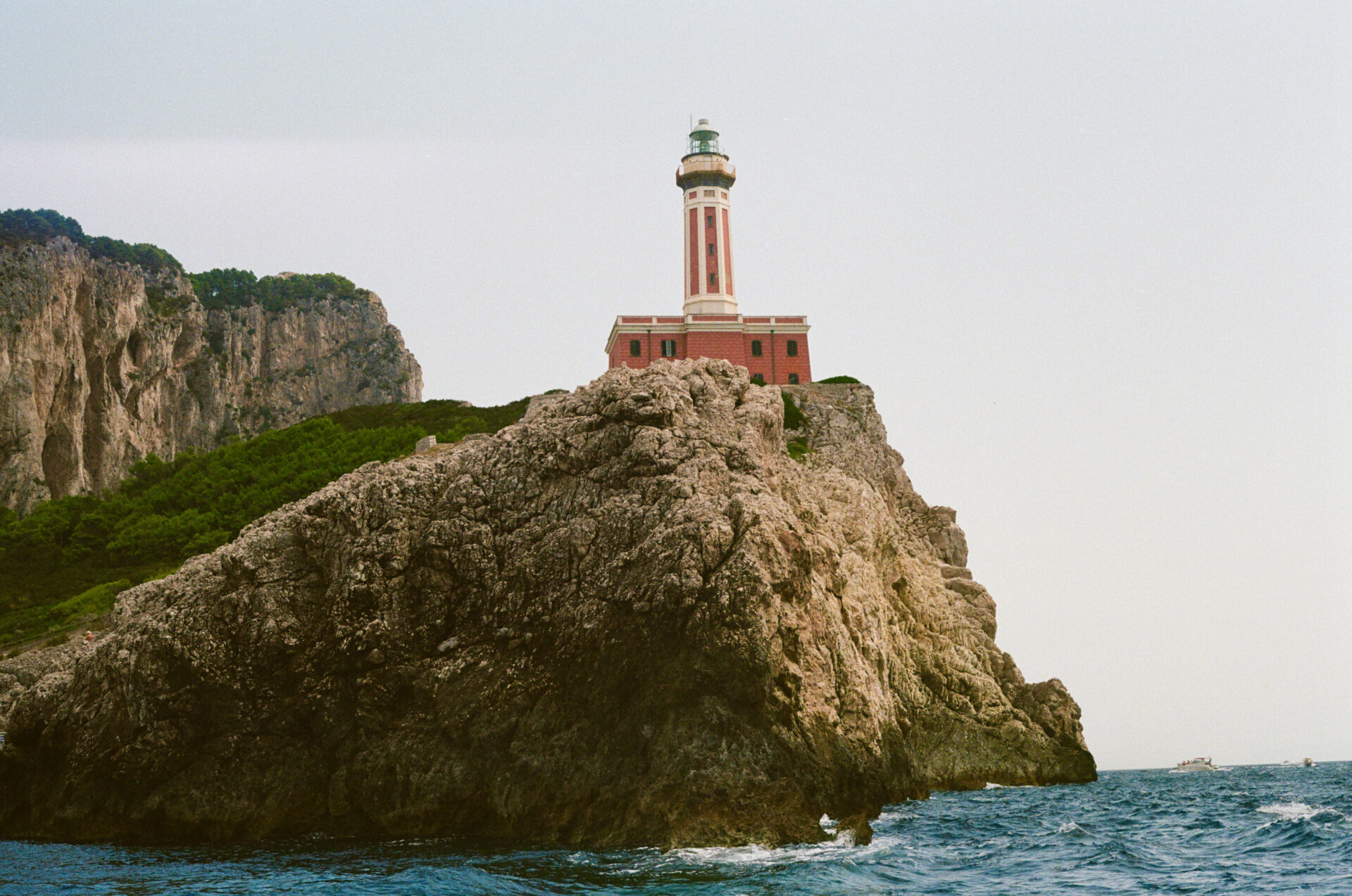
Faro di Punta Carena
WHERE TO SHOP IN ANACAPRI
La Casa del Sandalo – Don’t be fooled by the modern boutique, because Antonio Viva began making leather Caprese sandals back in 1958. The tradition is now carried on by his son Antonino, who is more than happy to chat with you about the techniques and process. They have a wide selection of sandals, and everything is customizable, handmade, and made on the spot—so you can have your very own sandals in just 15 minutes. It’s worth a visit even if you’re not shopping to peer into this slice of Capri’s history.
Tavassi Capri — On Anacapri’s strolling strip, maestro ceramist Gennaro Tavassi paints the island’s colors onto clay: think lemon-bright tableware, tiles, vases and even statement tabletops. Collections range from the classic maiolica of “Camerelle” to the crisp geometrics of “Tragara,” and the studio accepts bespoke commissions for homes and hotels.
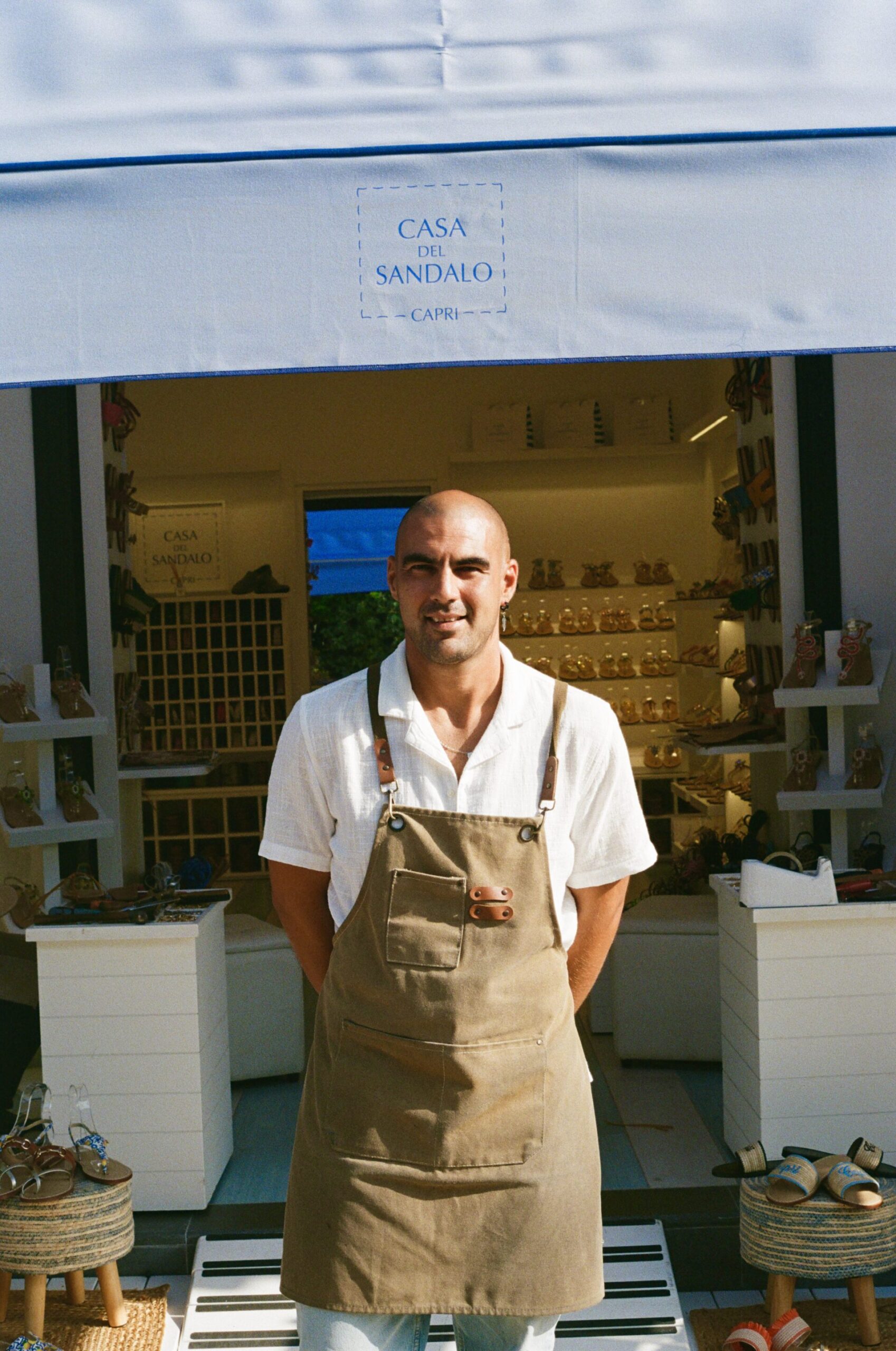
Antonino Viva in front of his bottega
